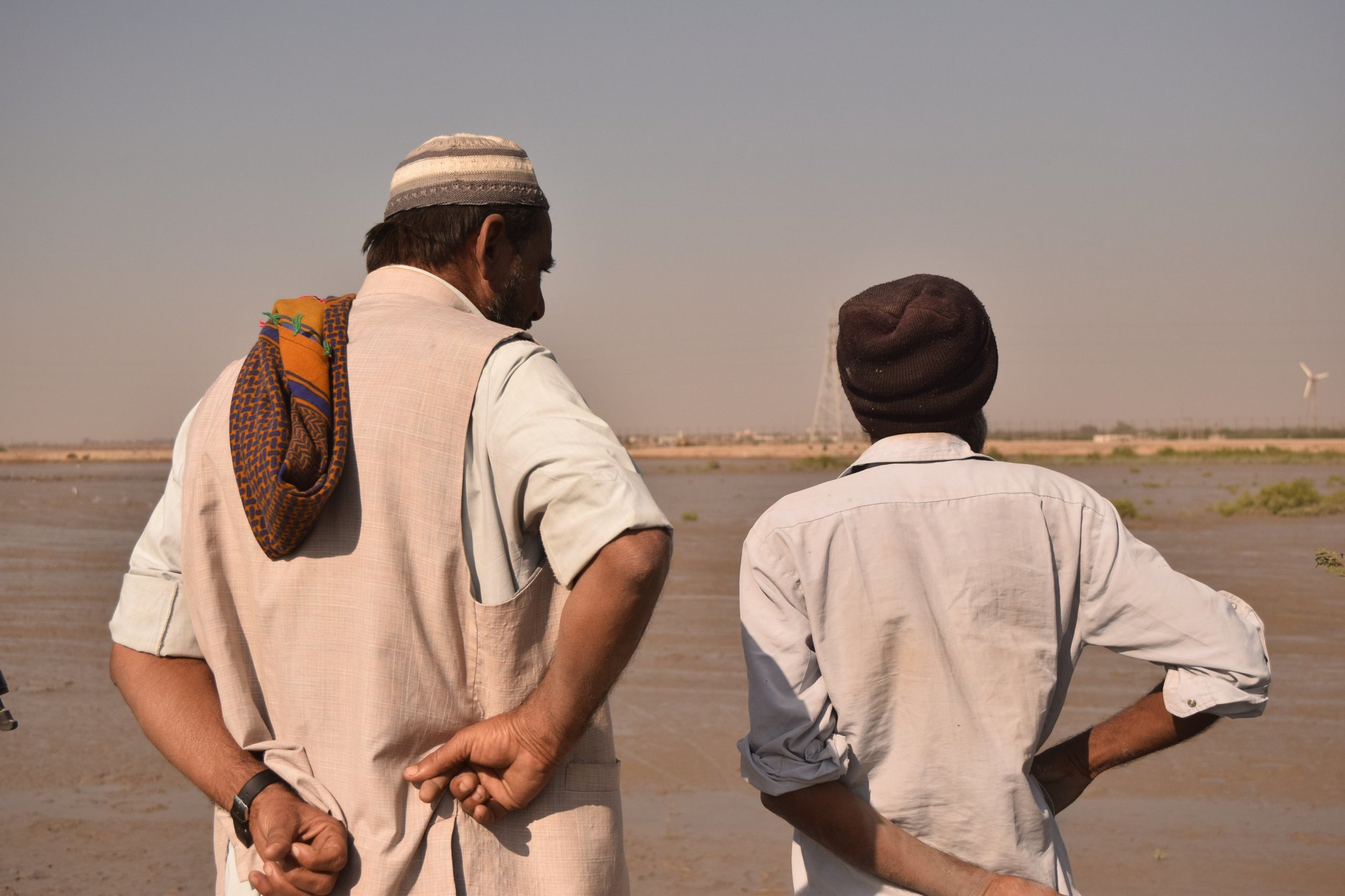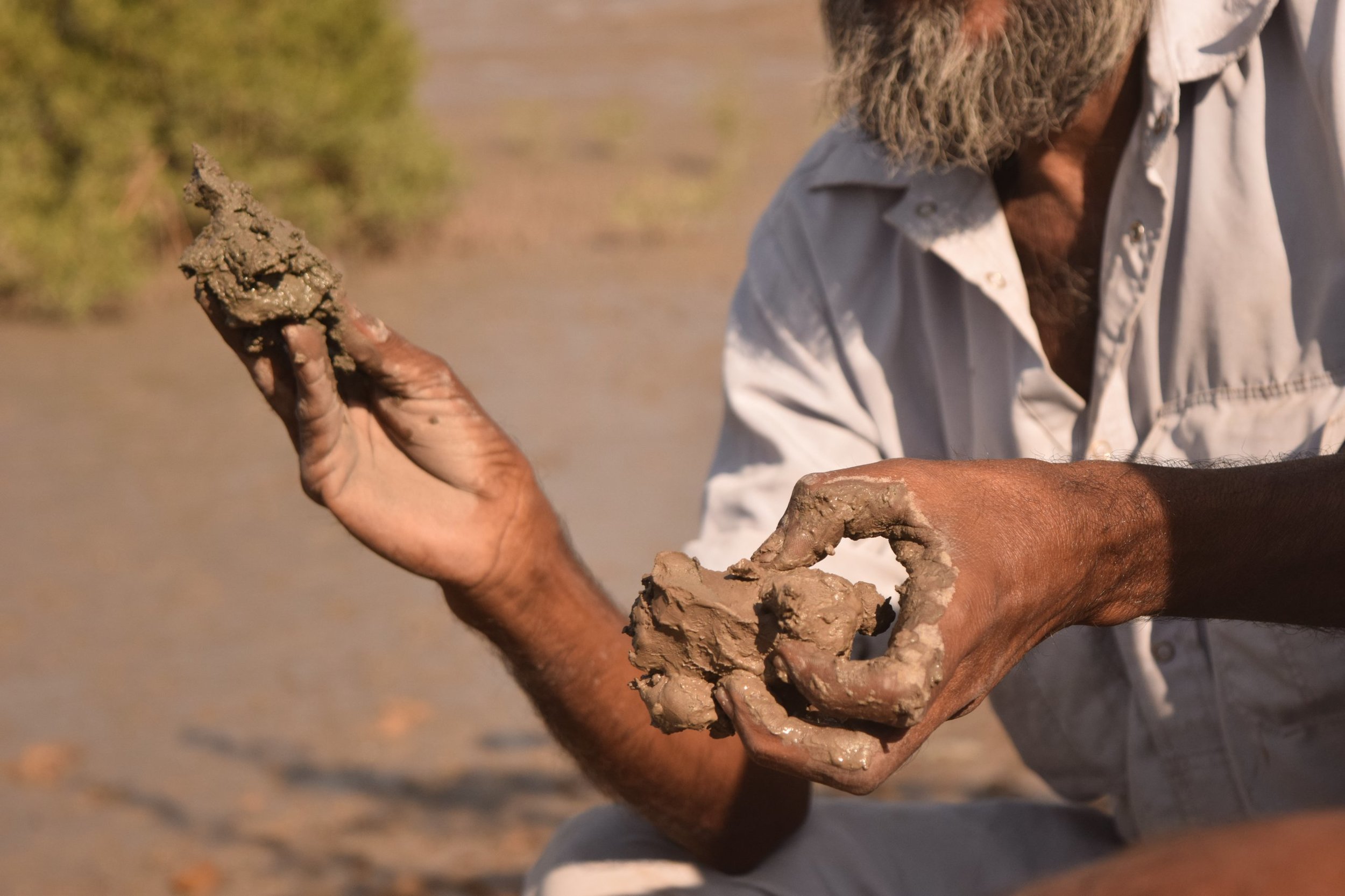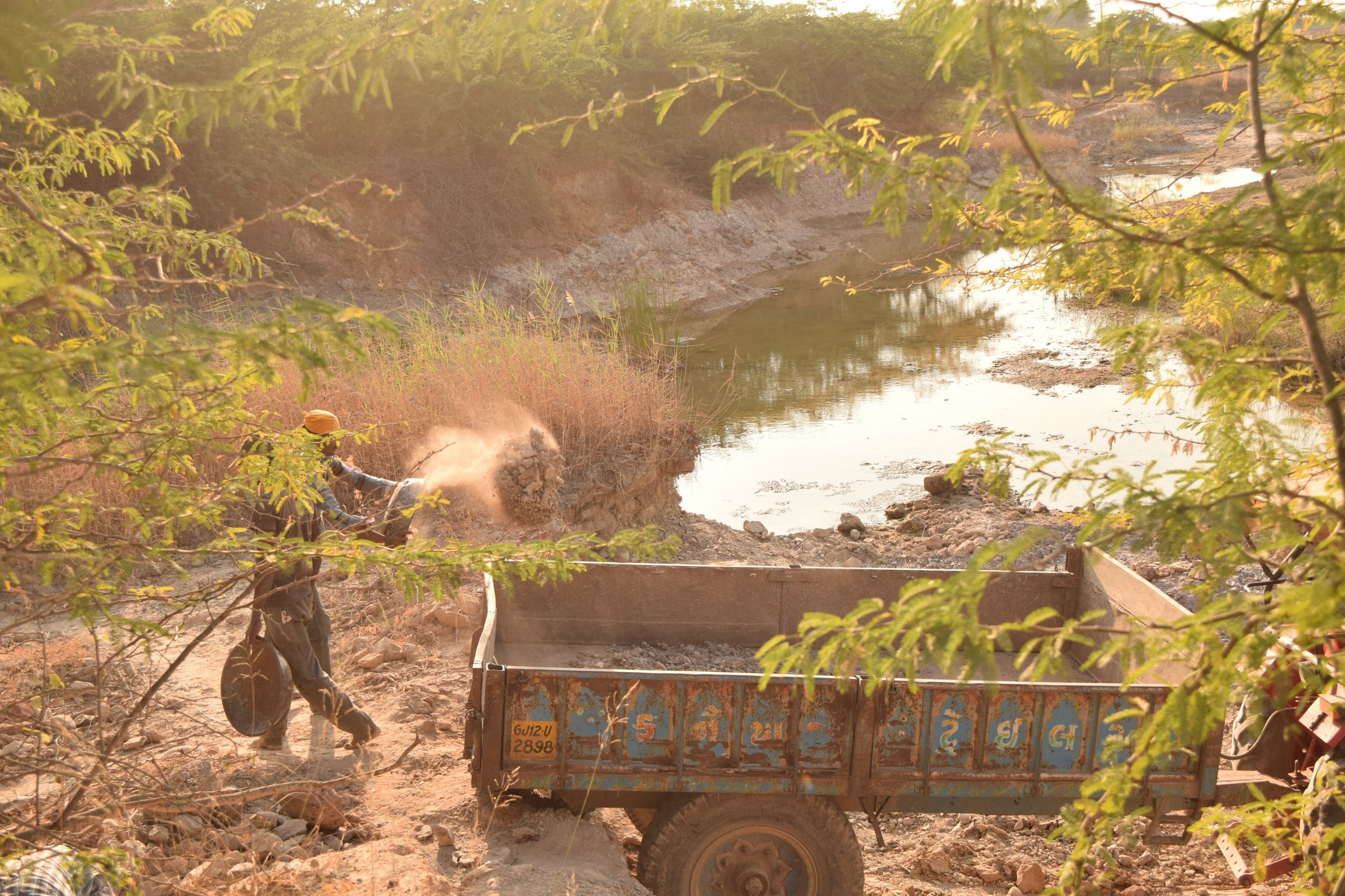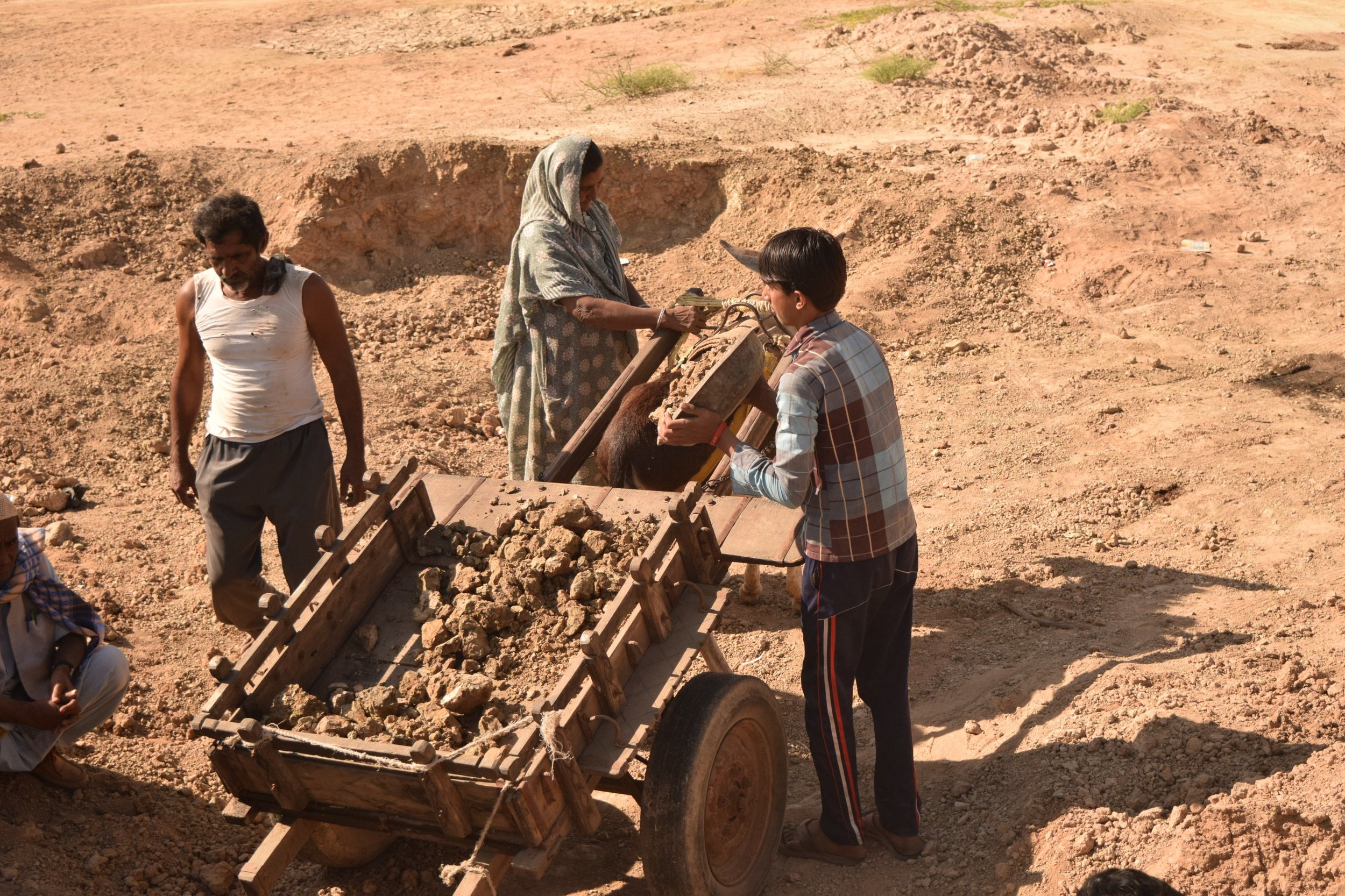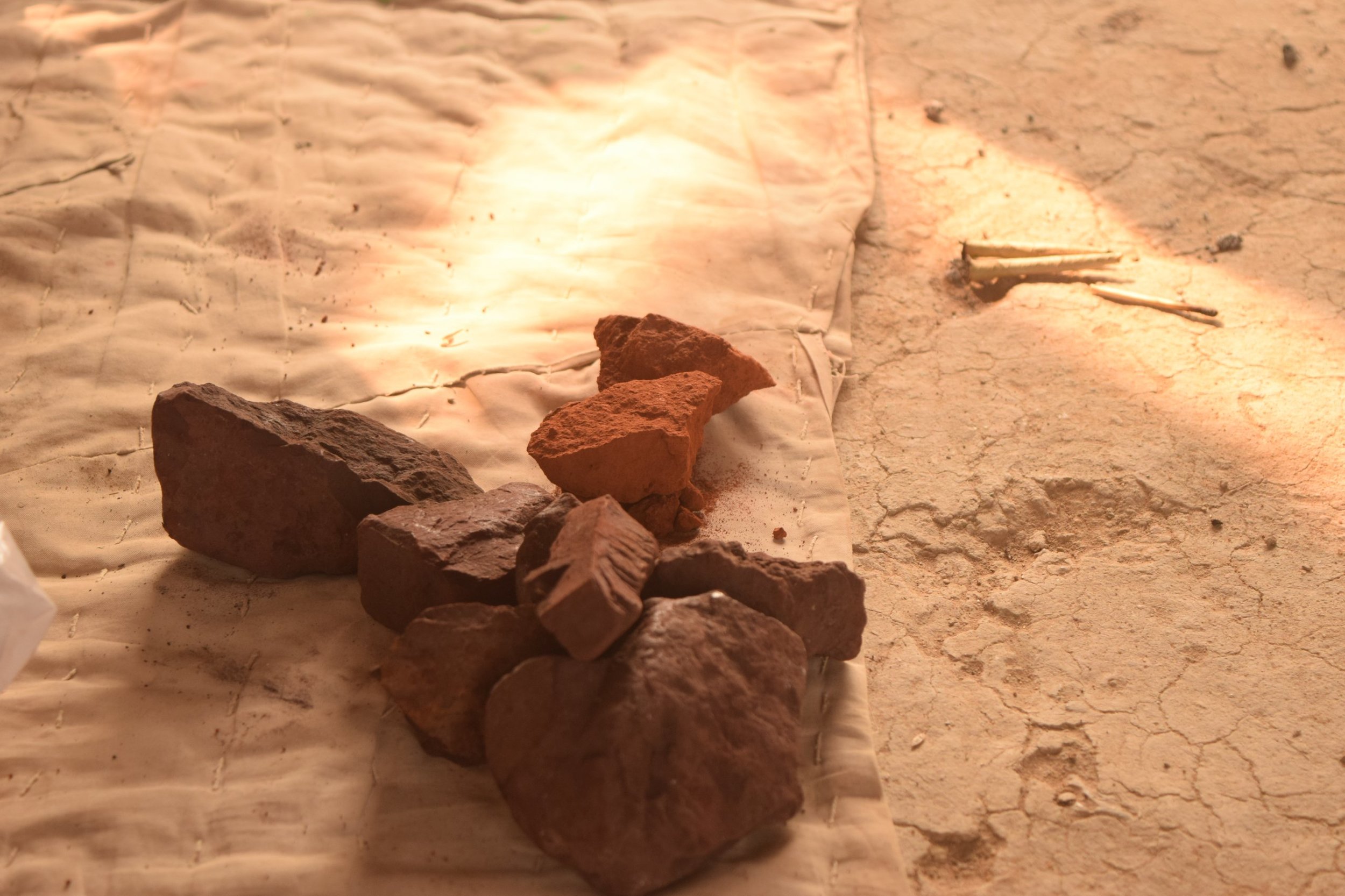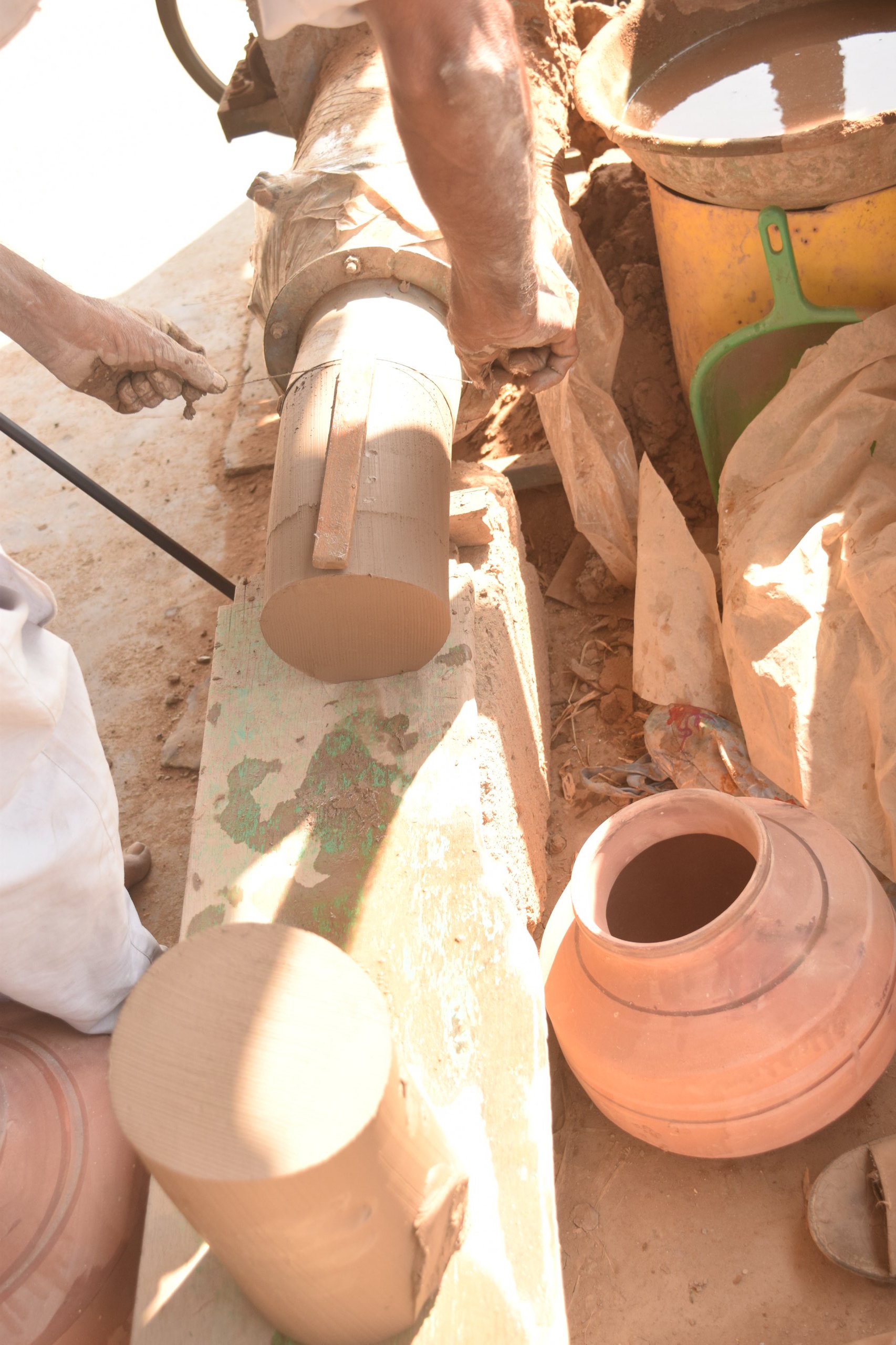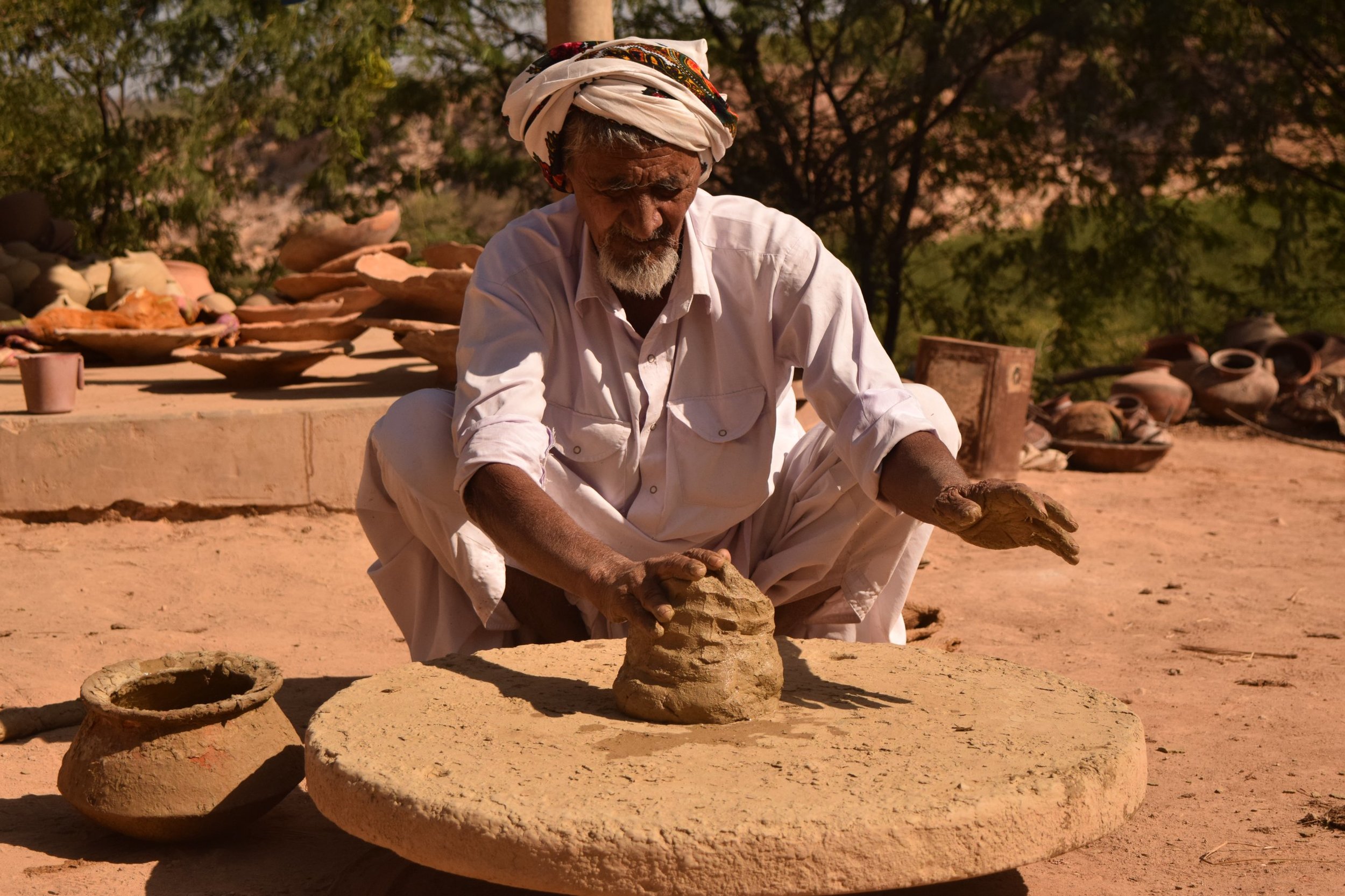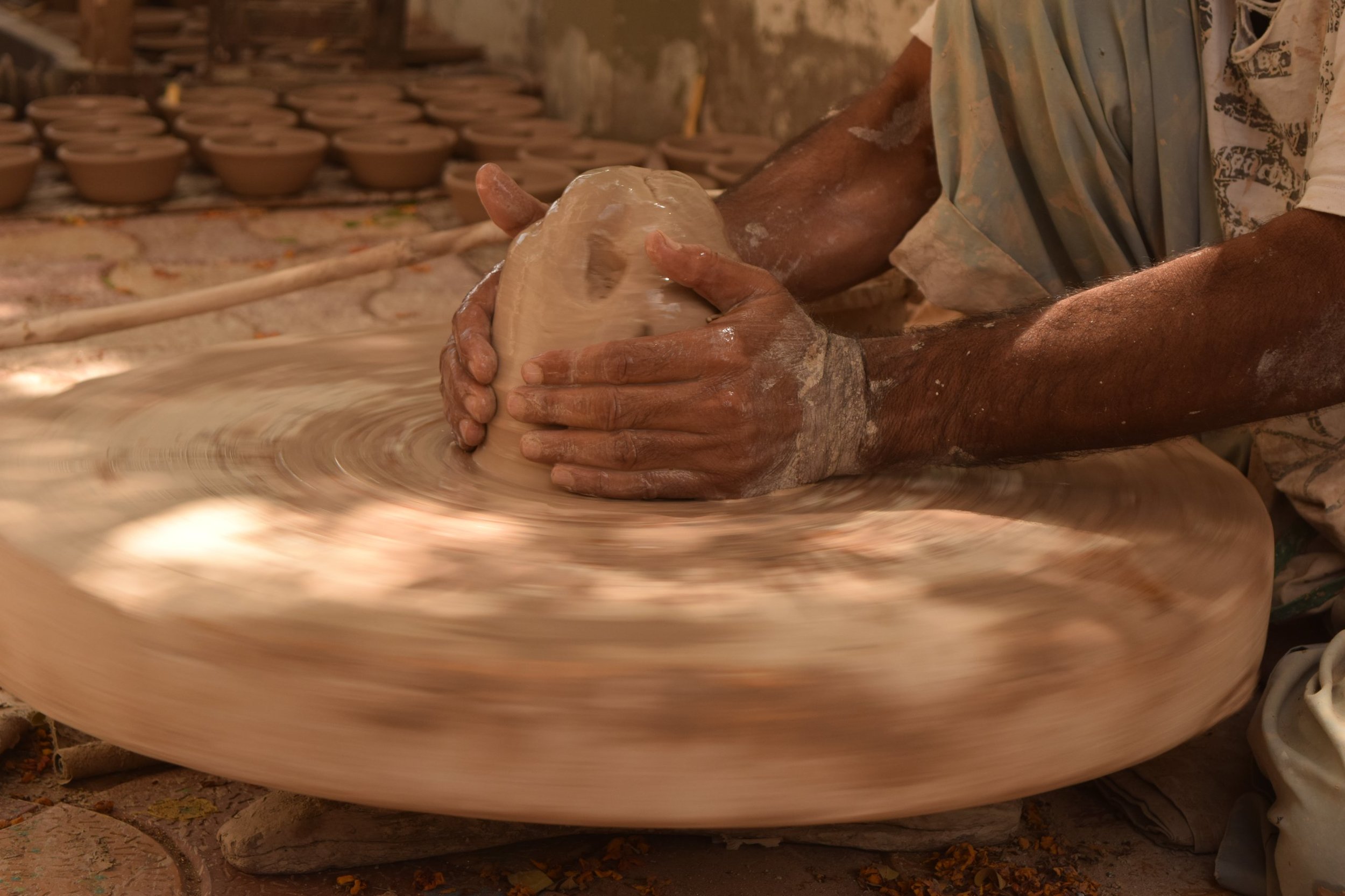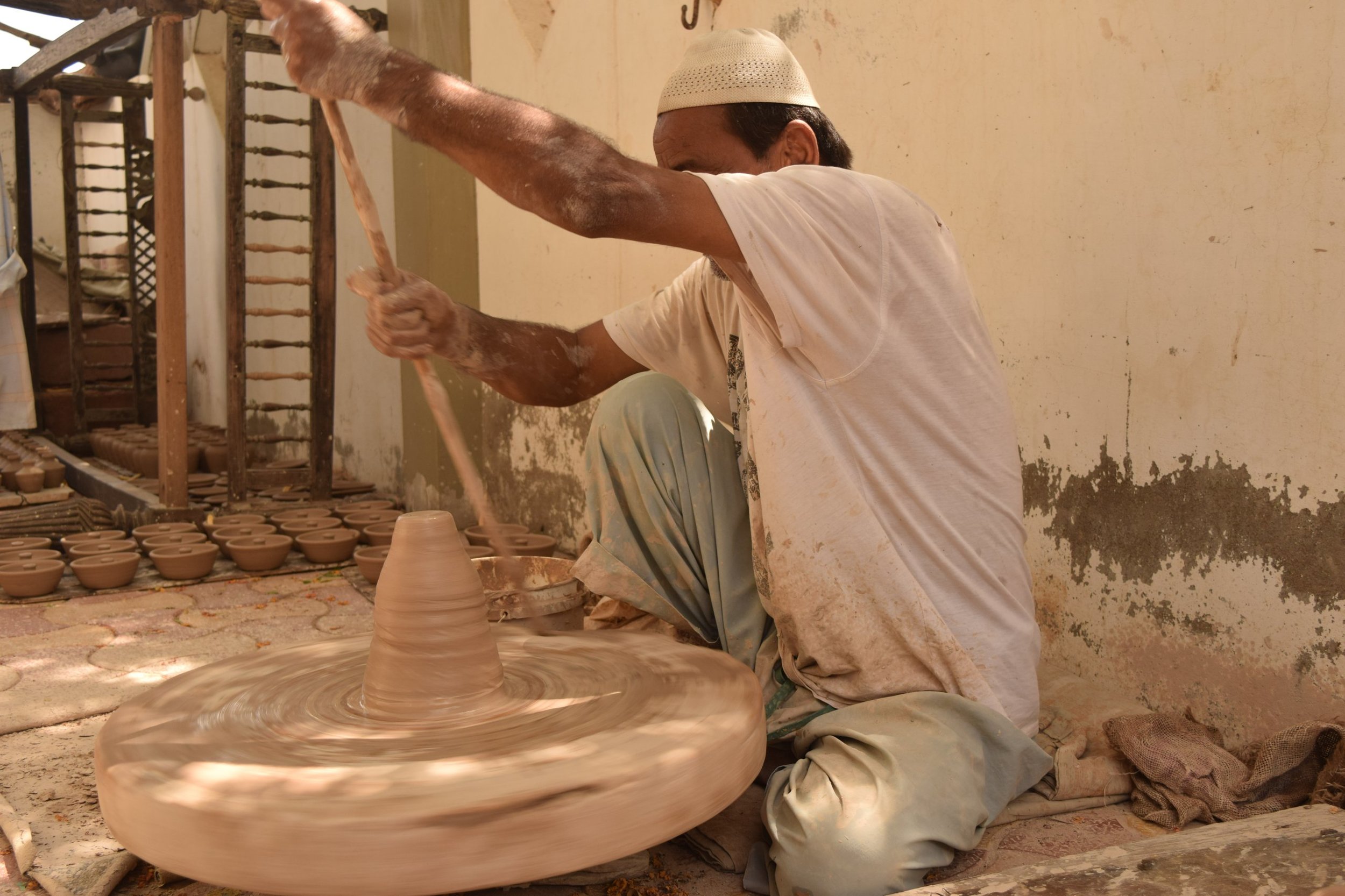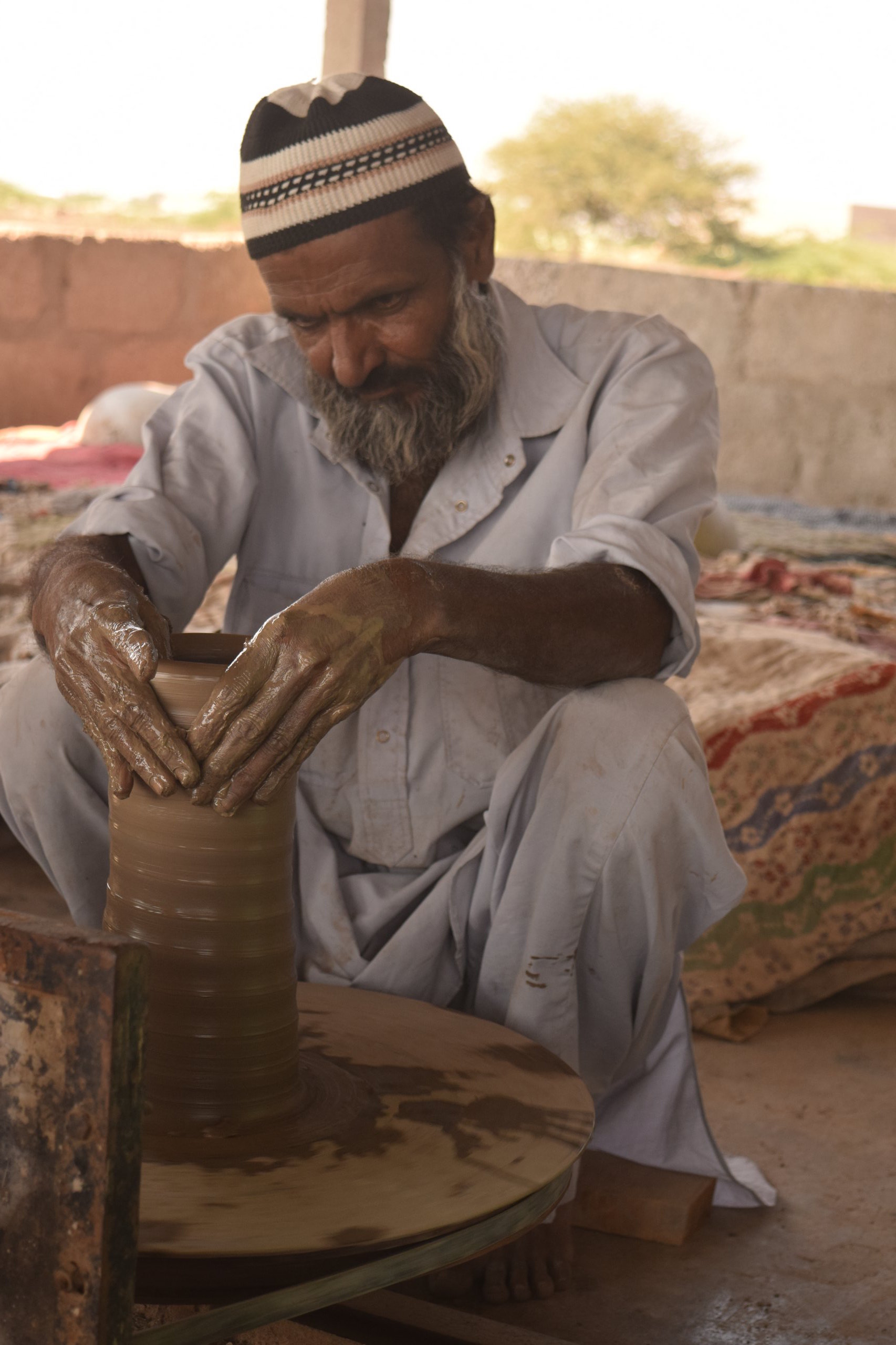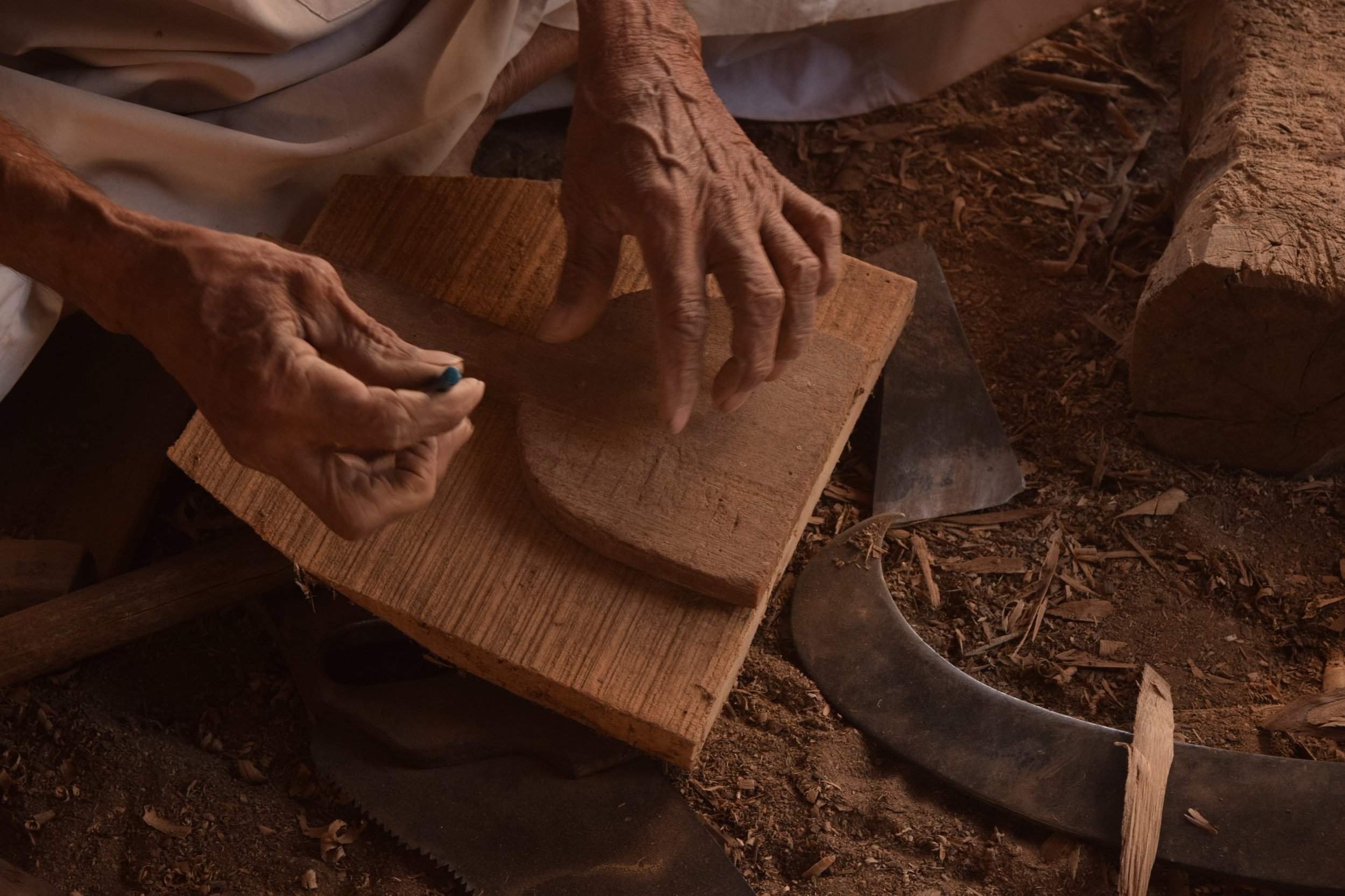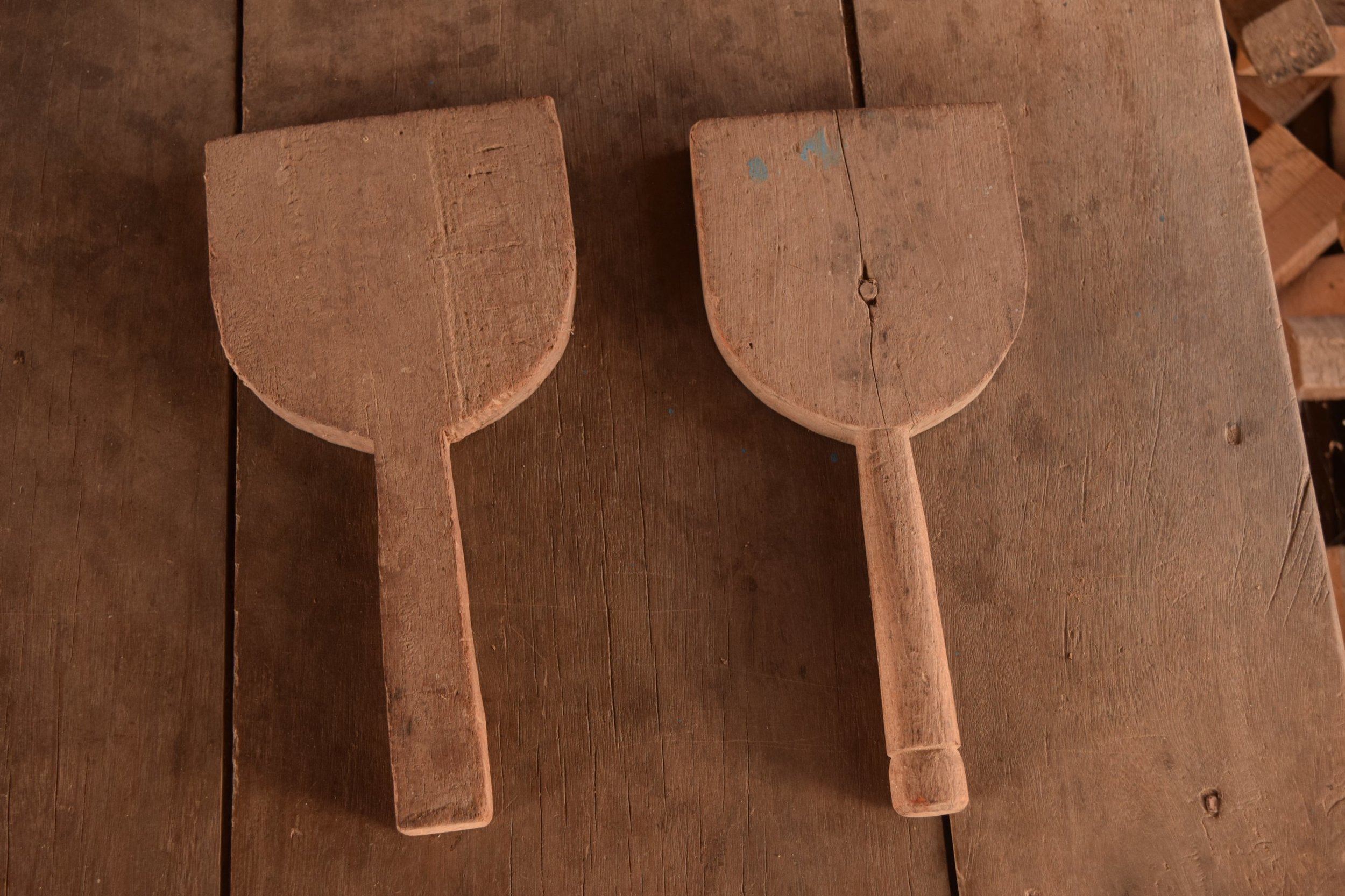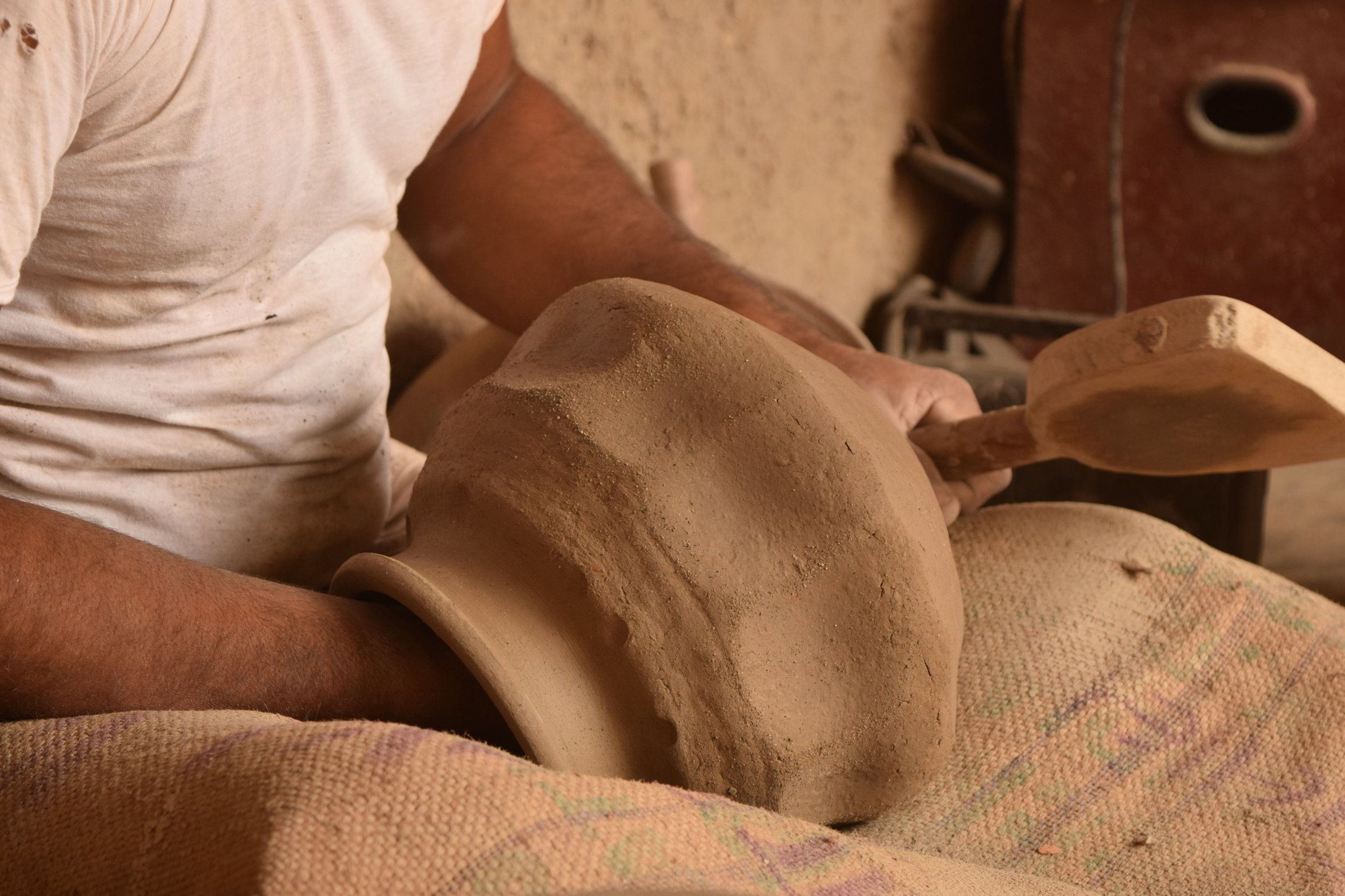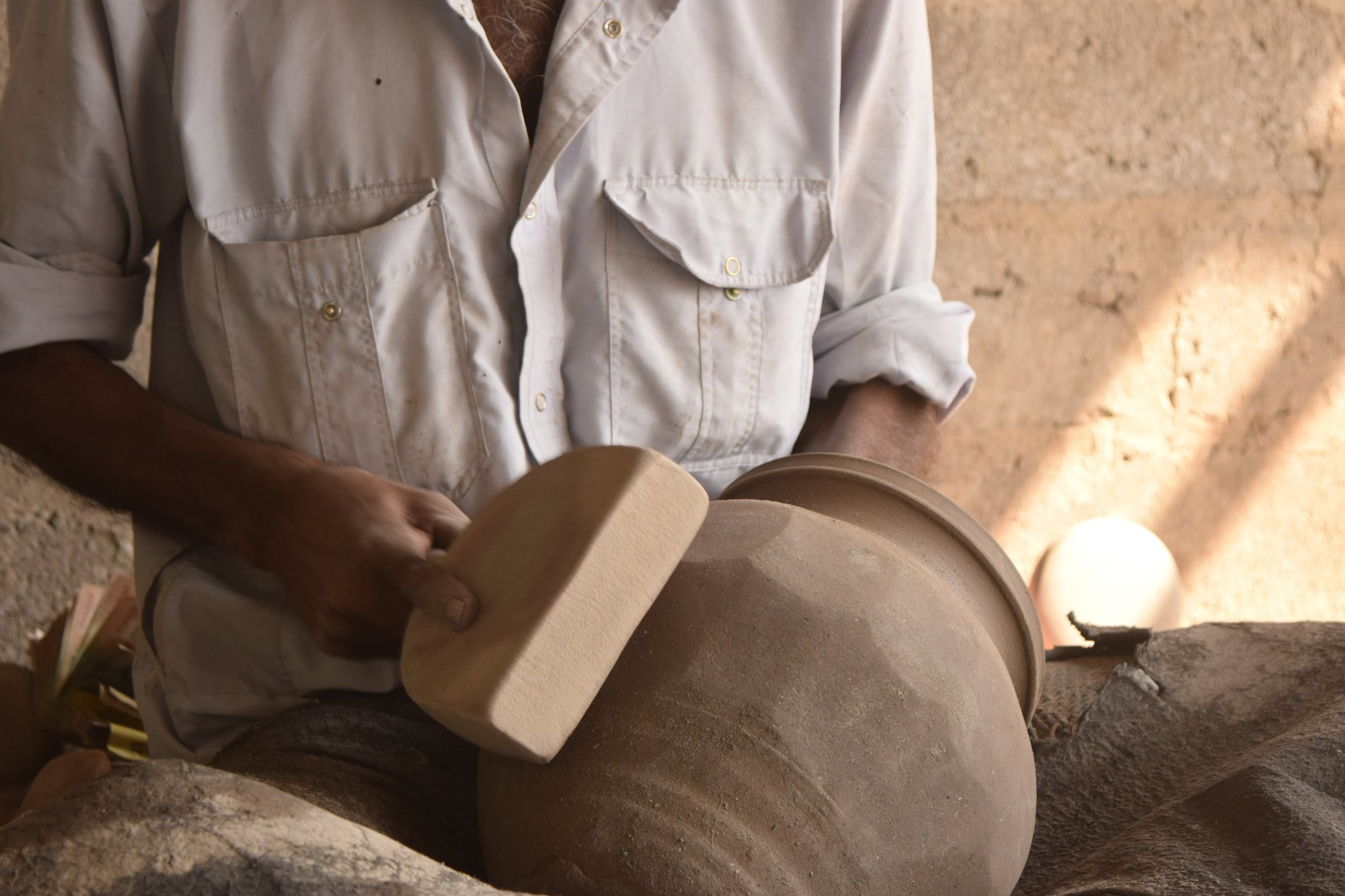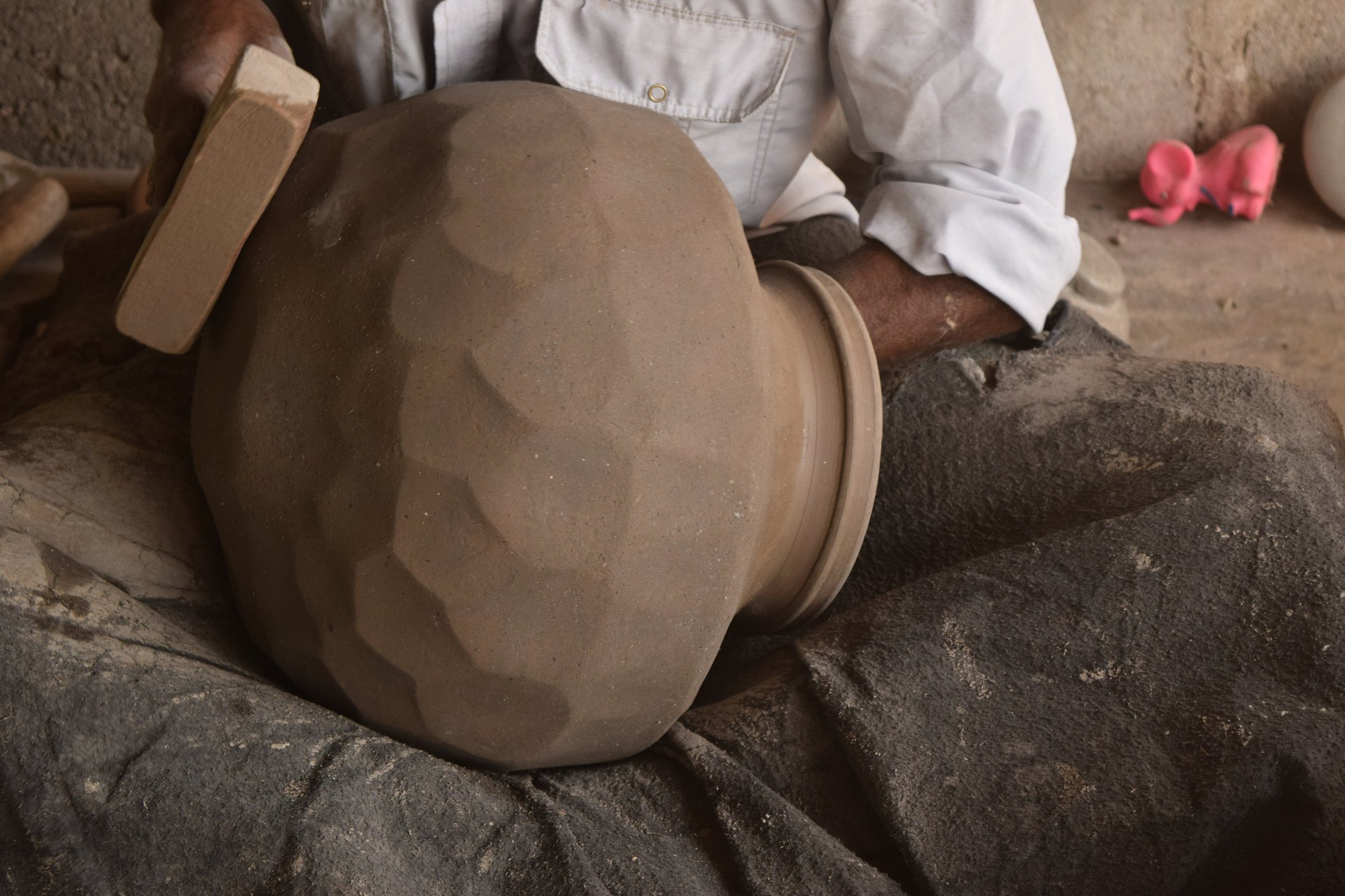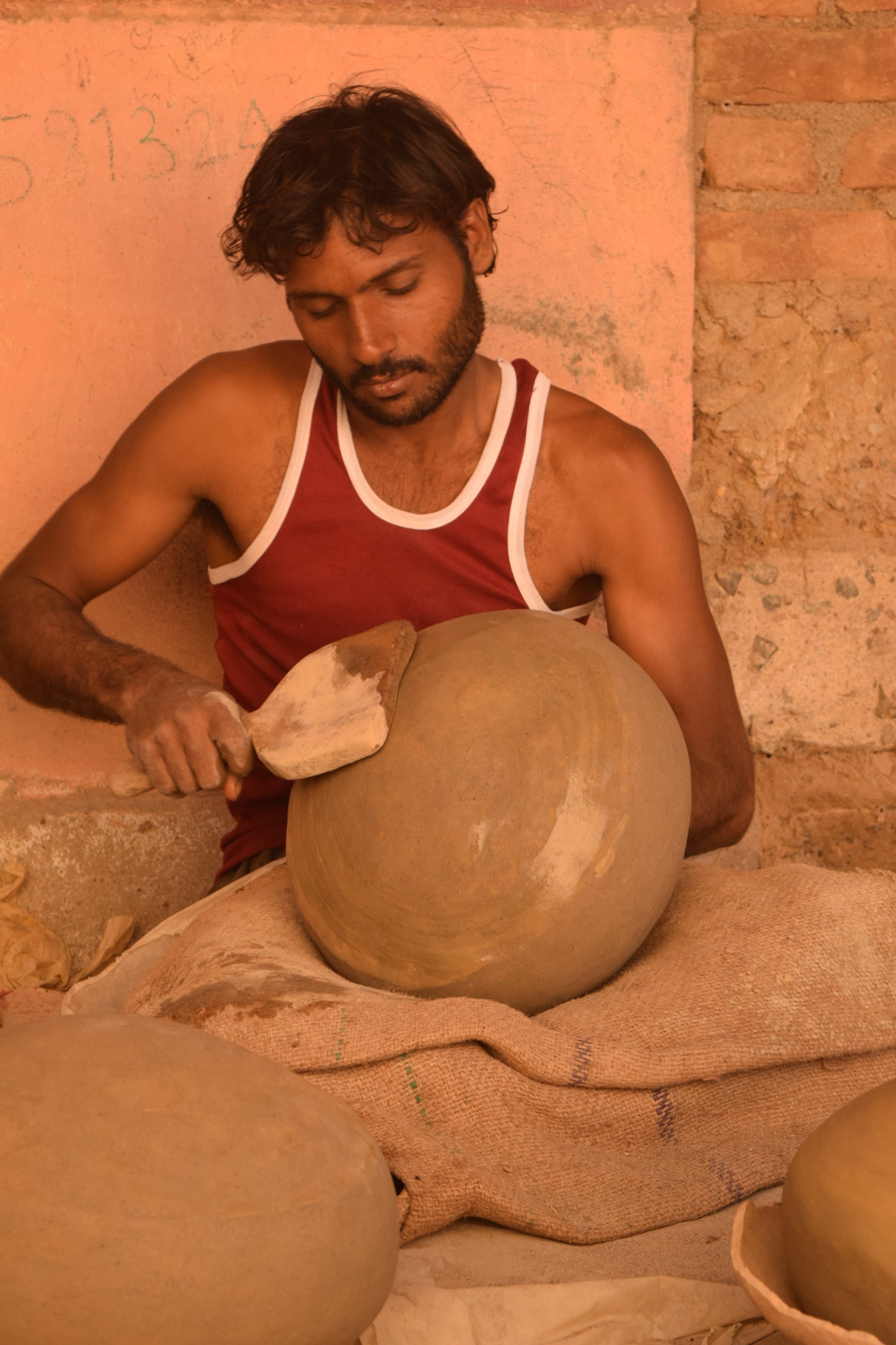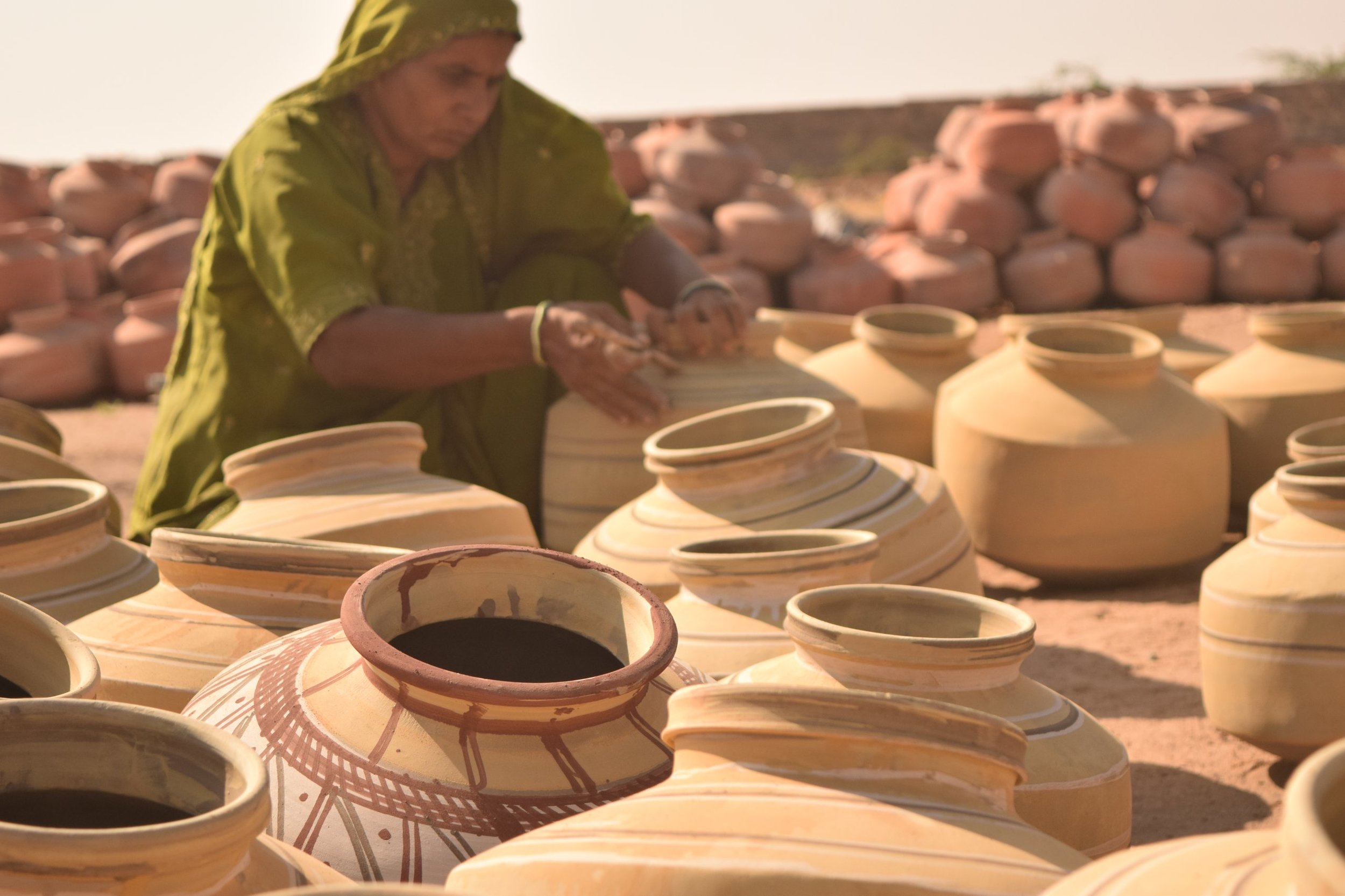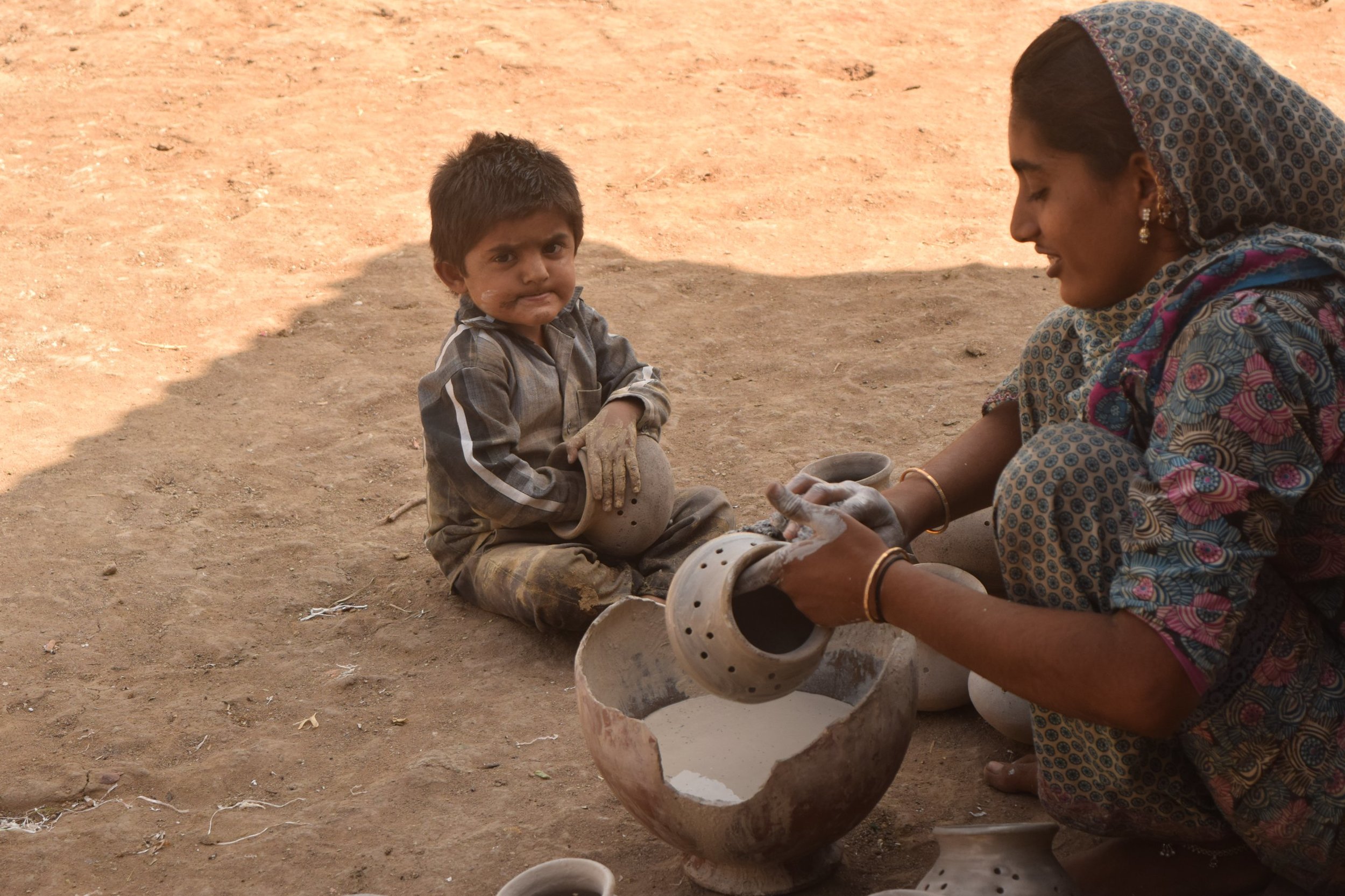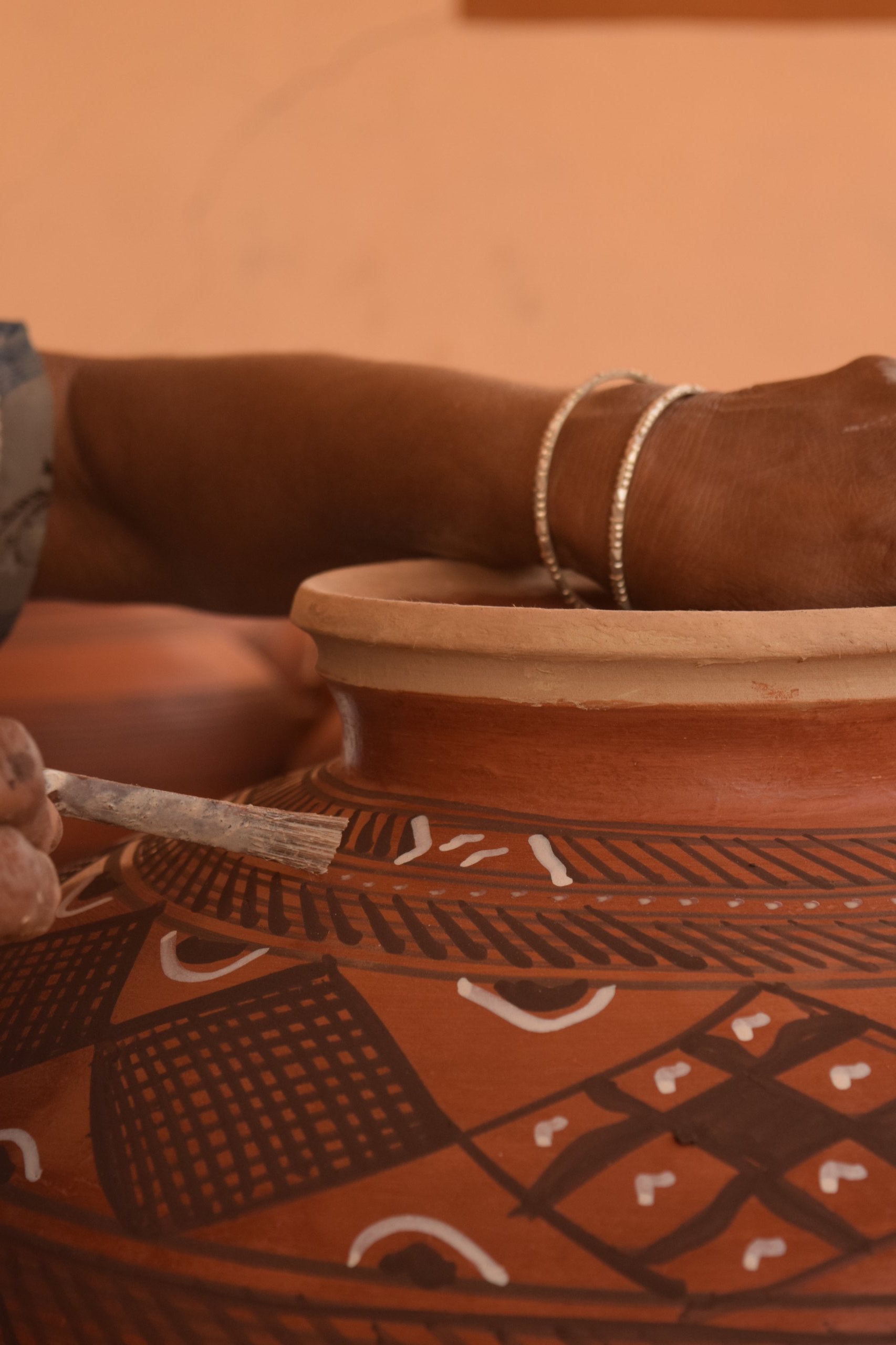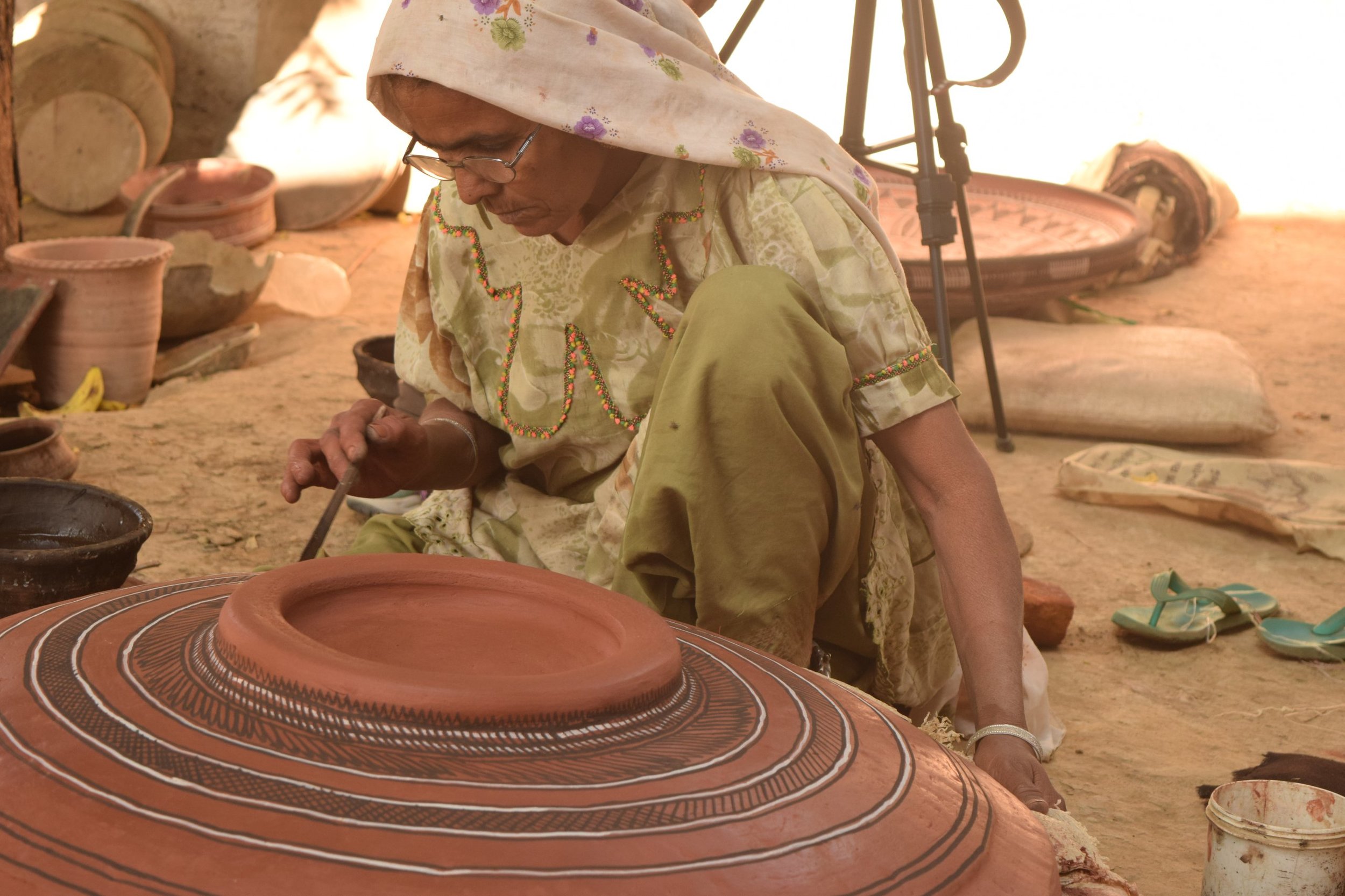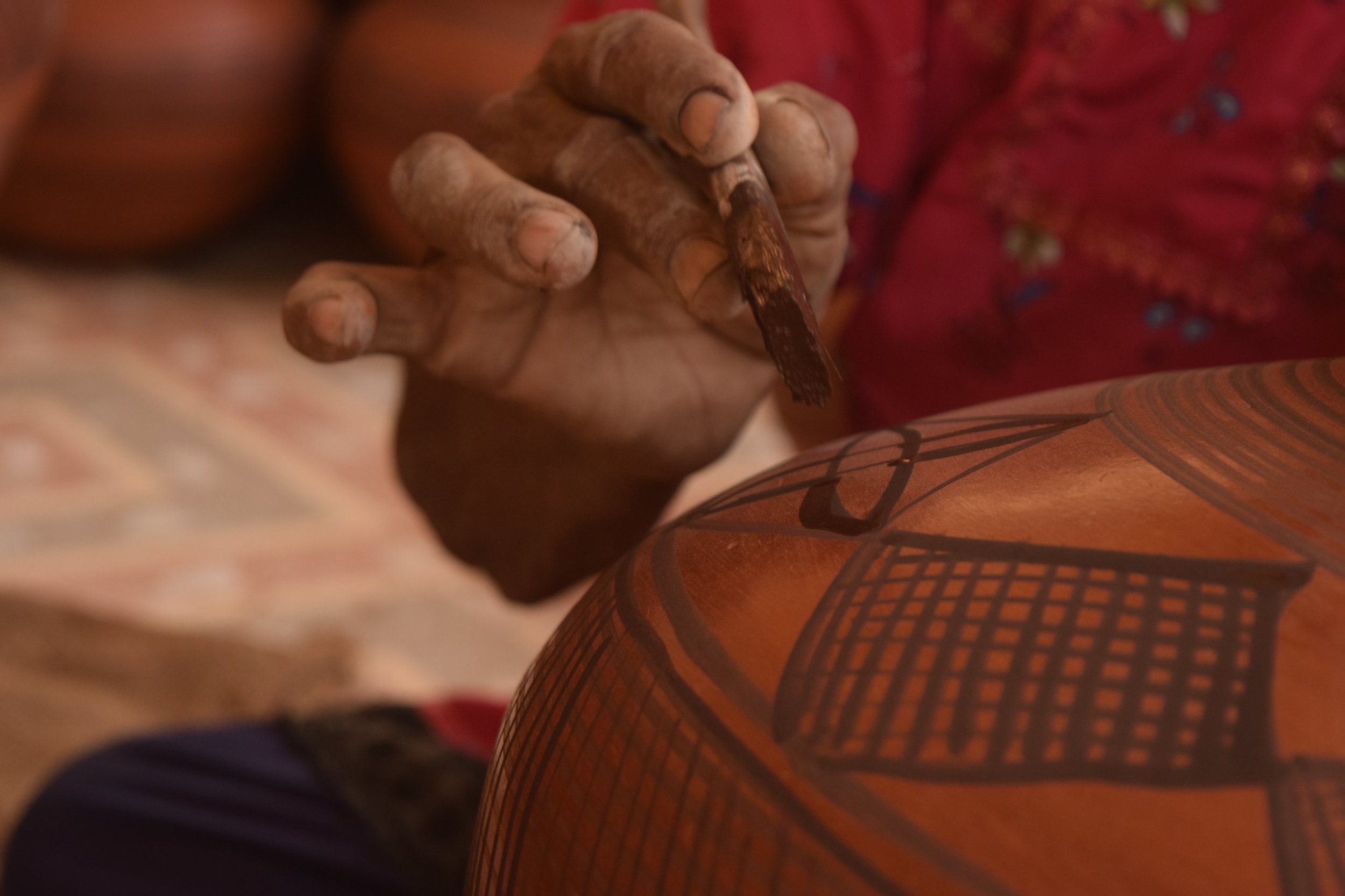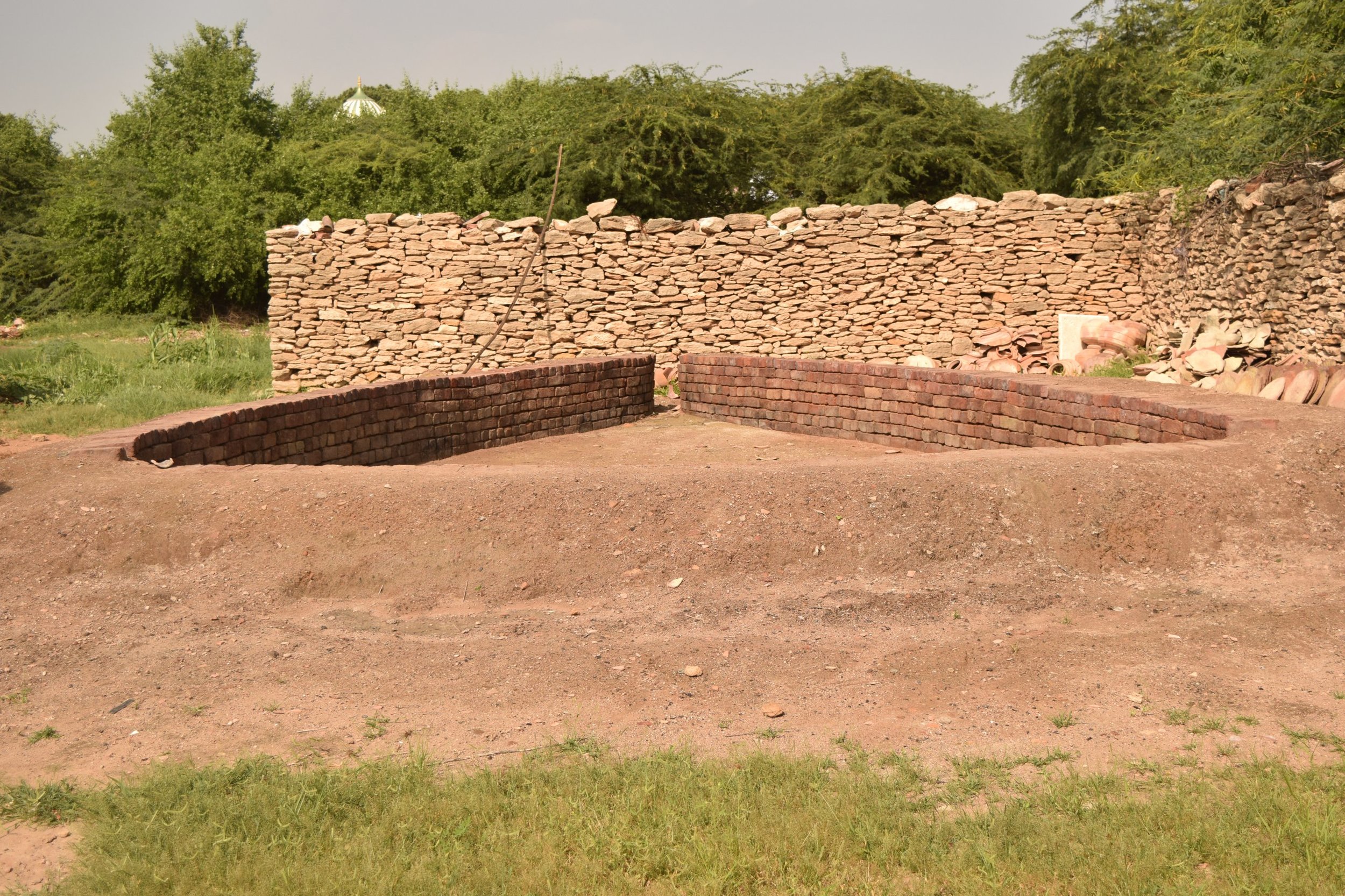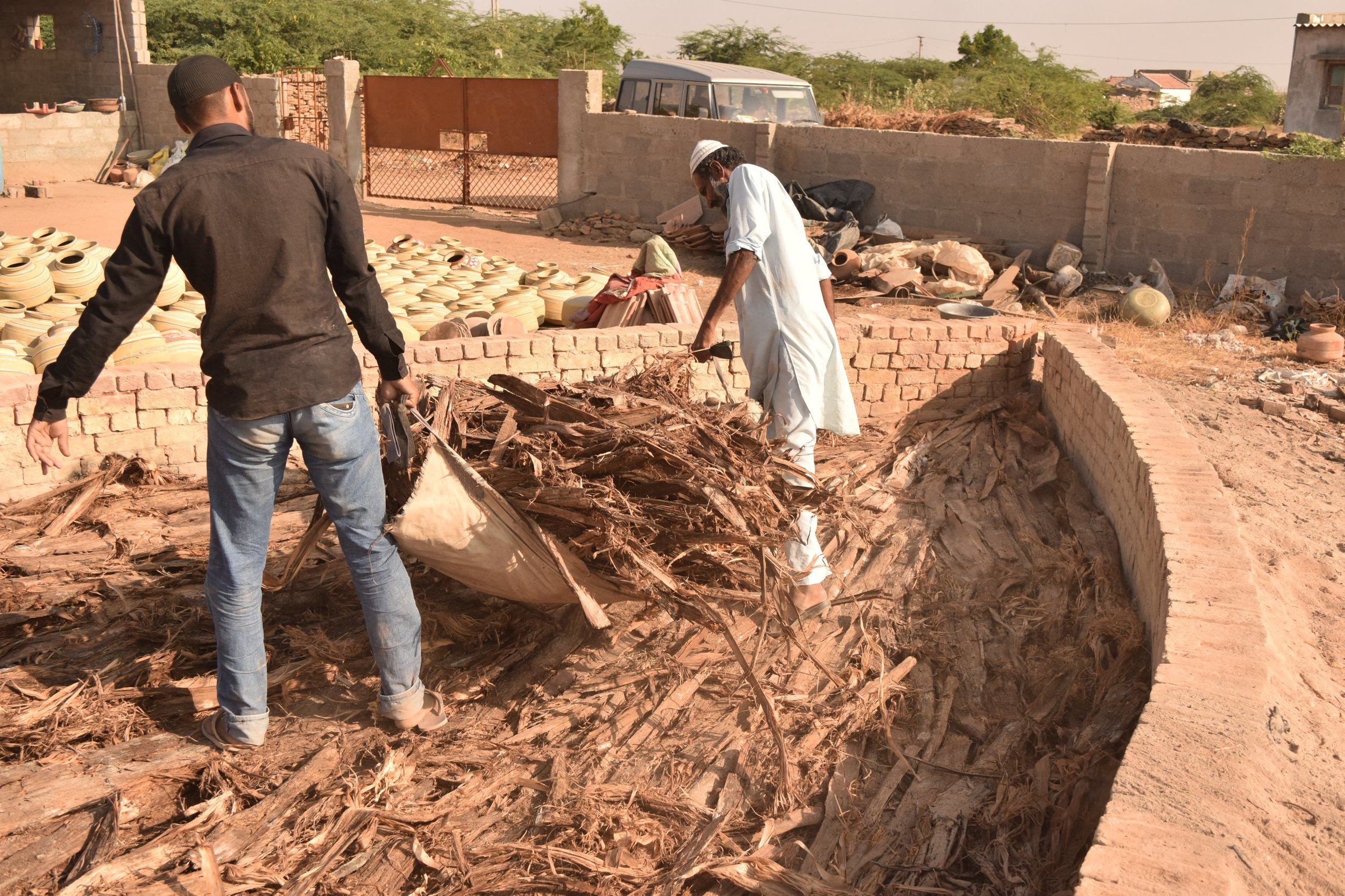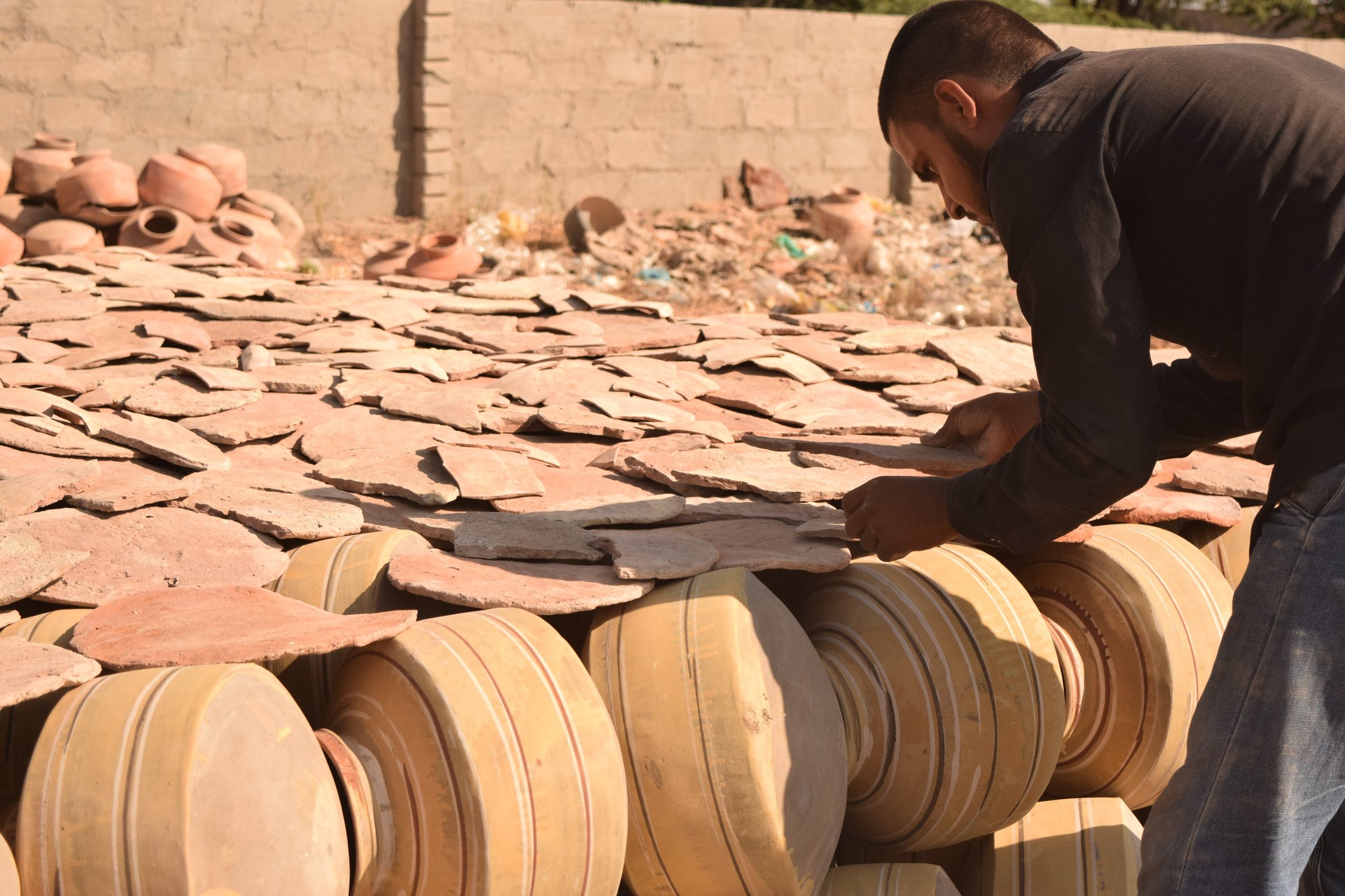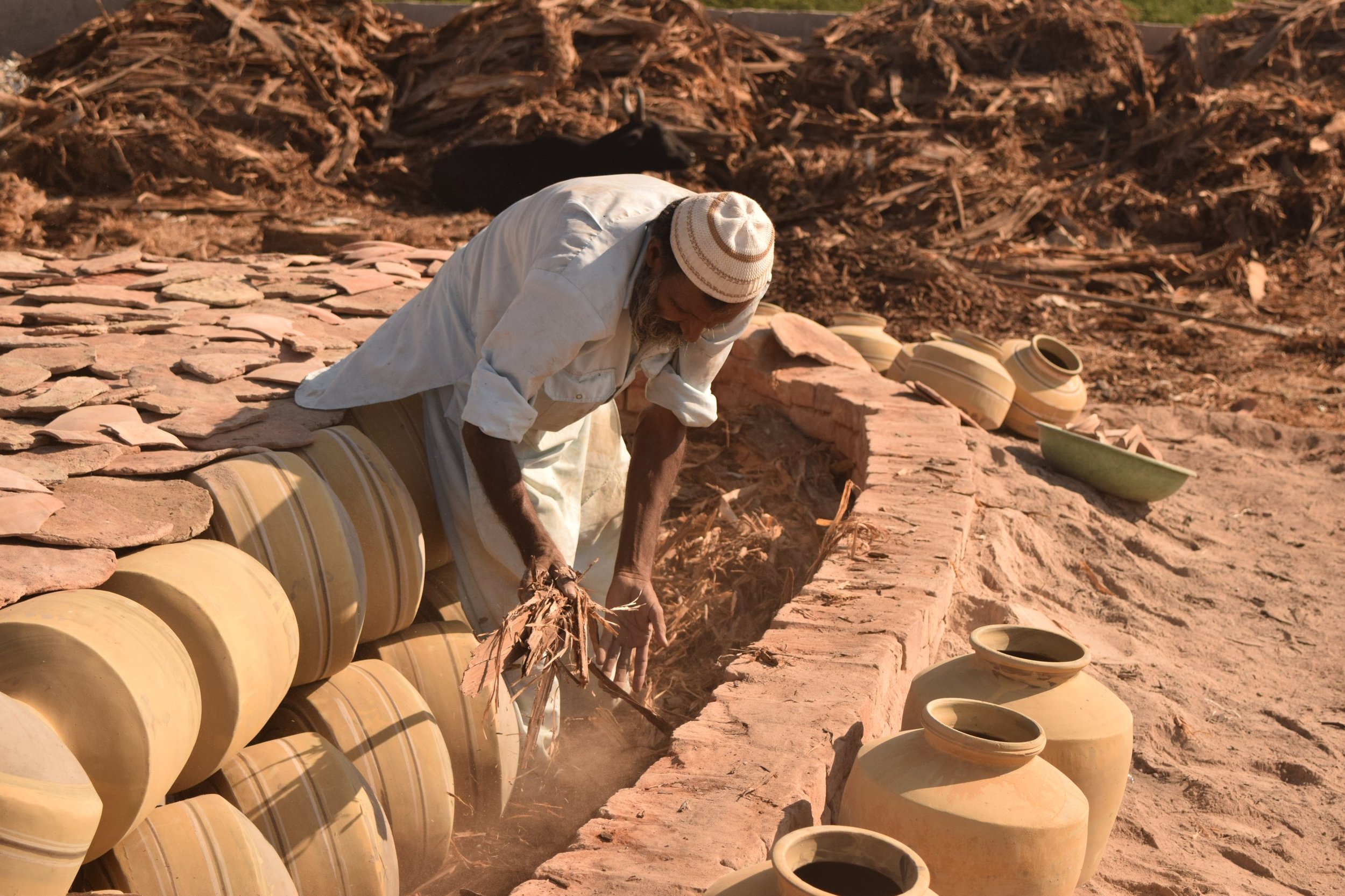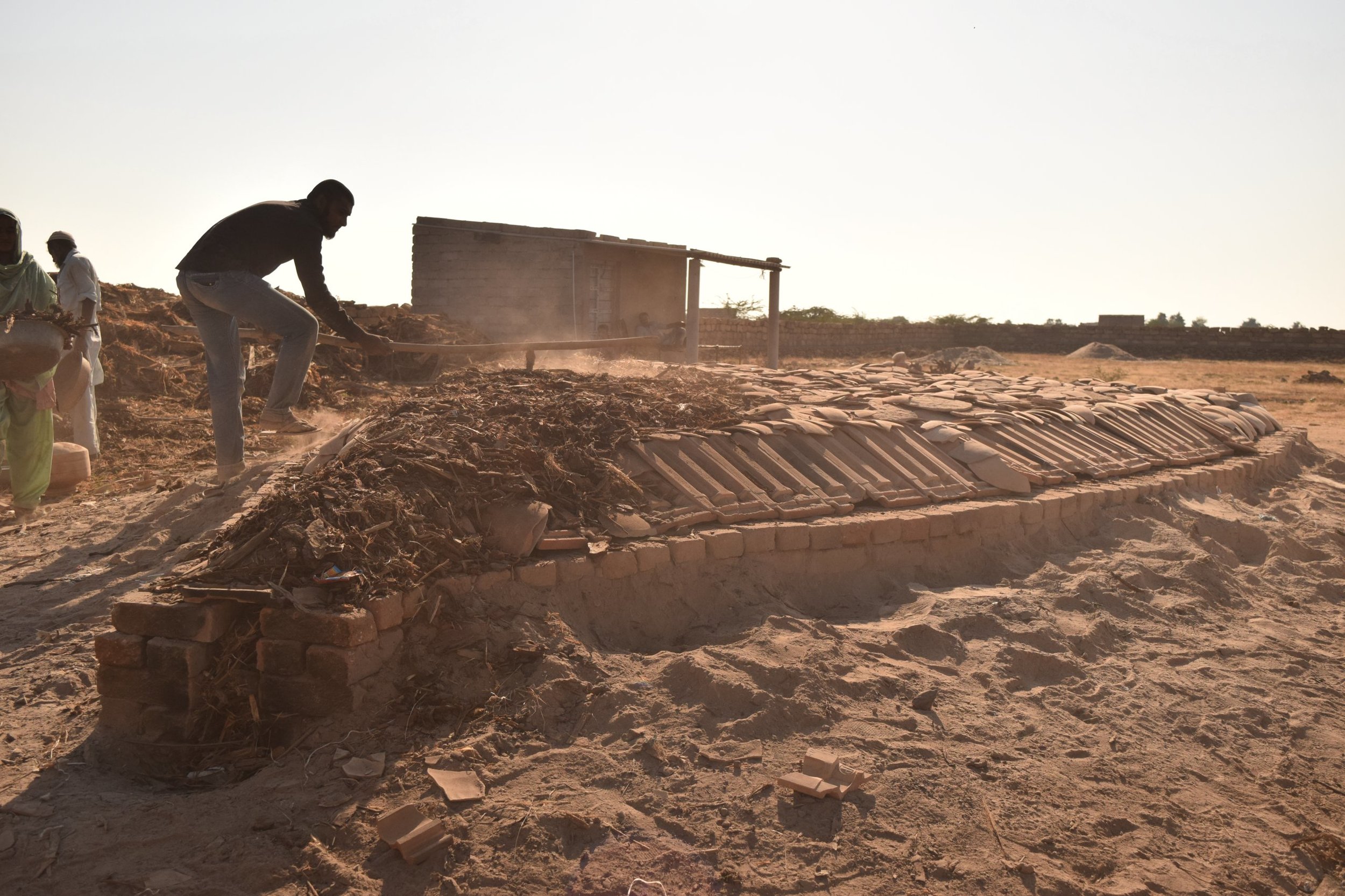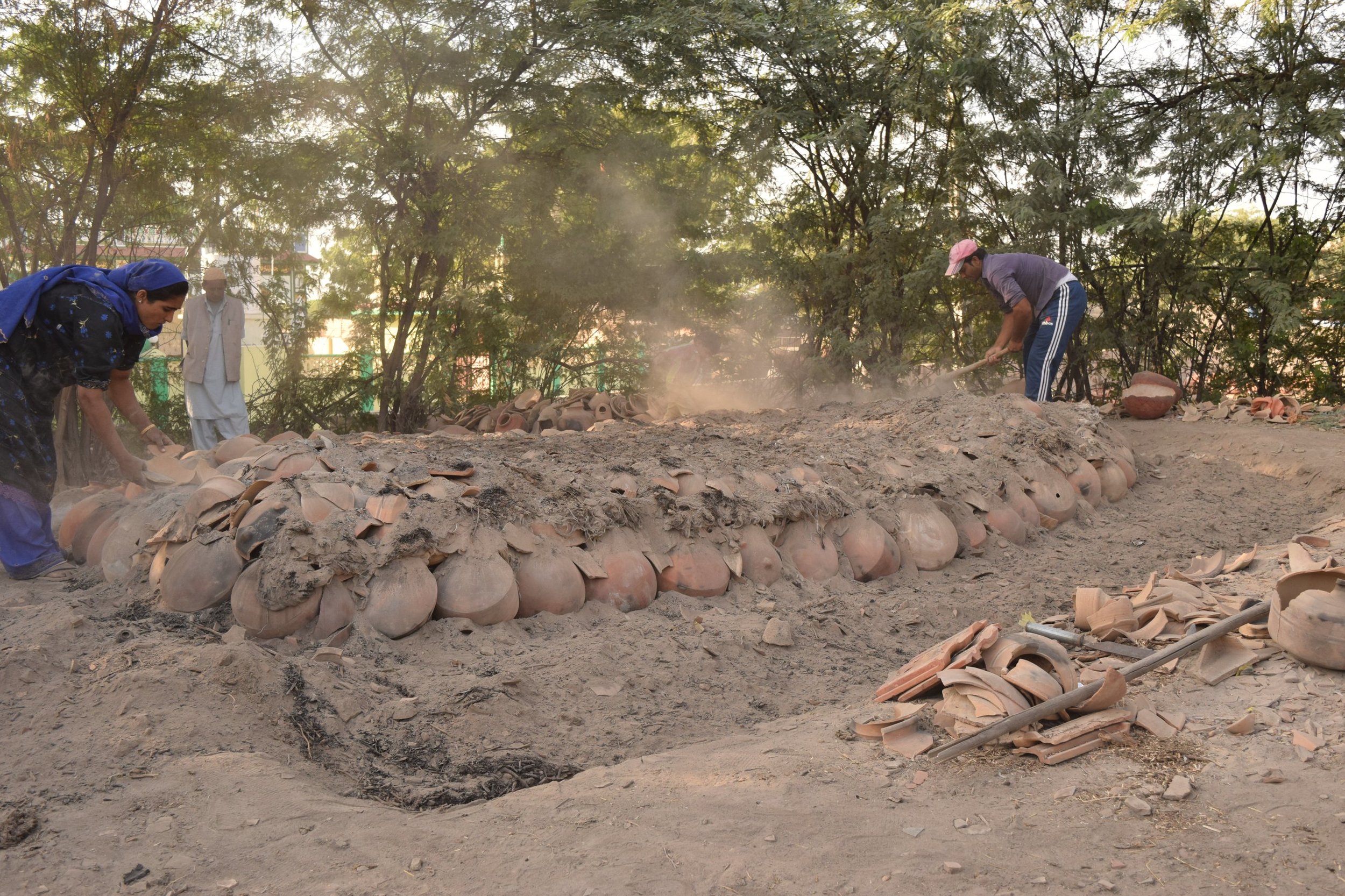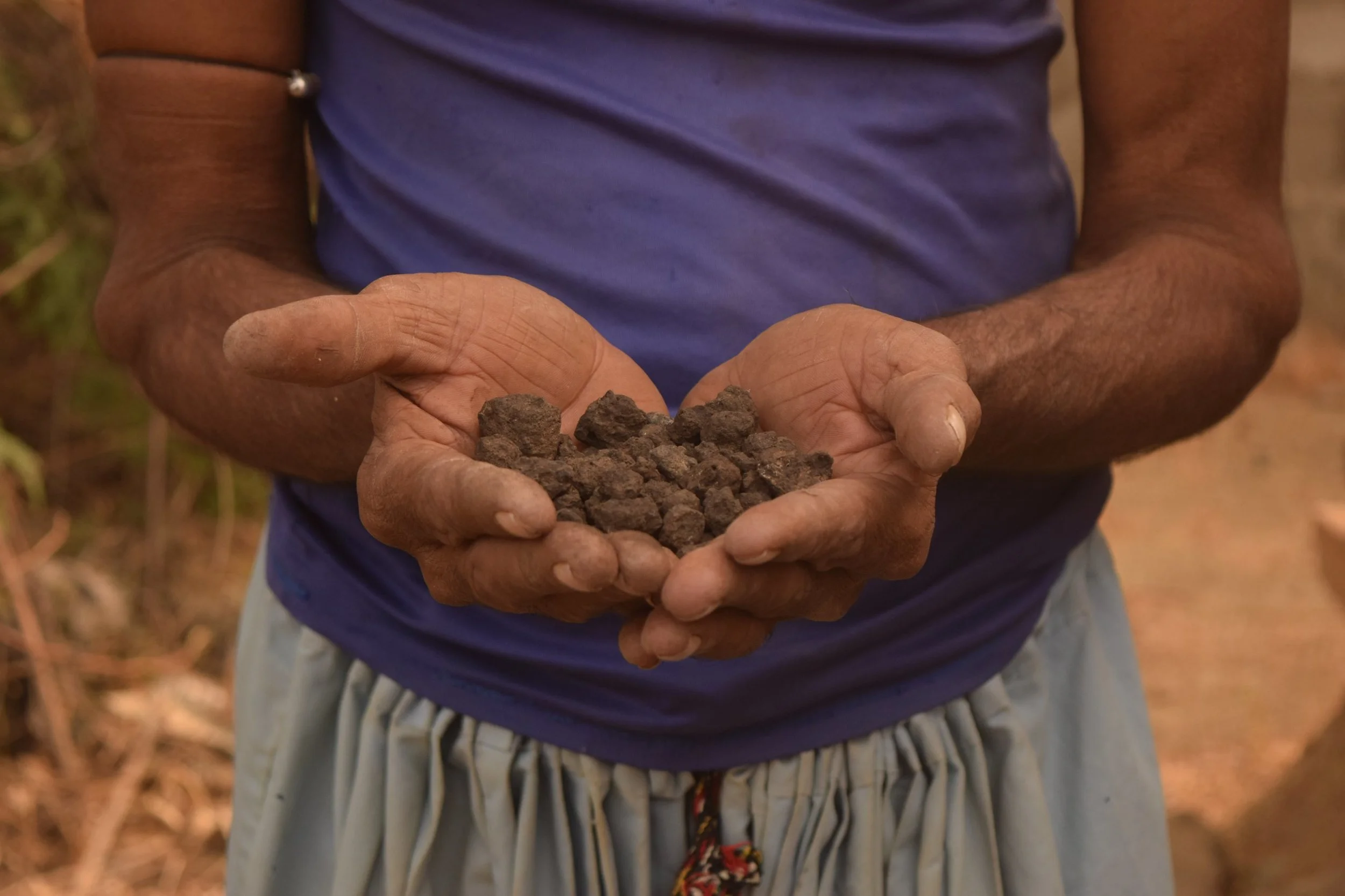
1 - Identification and preparation of clay
There are different types of clay in different regions of Kachchh. In olden times, the potters would go on donkeys to collect clay. They would check the clay, as it is different on different layers of earth. This identification of the “right” clay comes with experience. First, potters rub the dry clay with their nail. If the clay appears shiny, then possibly it can be used on the wheel. Next, potters wet the dry clay in water to check for impurities such as sand or stone.
Once the identification process is complete, potters prepare the clay. Generally, clay is brought in large chunks, and is brokwn down into finer pieces. Women do this work by soaking clay in water and refining it through a wire mesh or cotton cloth. Once the clay has dried slightly, it is ready to throw on a wheel.

2 - Throwing
Until recently, there were only stone wheels in Kachchh, which were rotated manually using long wooden rods. In the last 30 years, potters have gained access to electric wheels - though in remote and rural areas, electricity can be uncertain.
As potters are mass producers, they must prepare large amounts of clay at one time. Theymdo not use tools like a measuring tape to check the height or width of a particular product. Their accuracy instead comes from practice and the “unknown sense.”
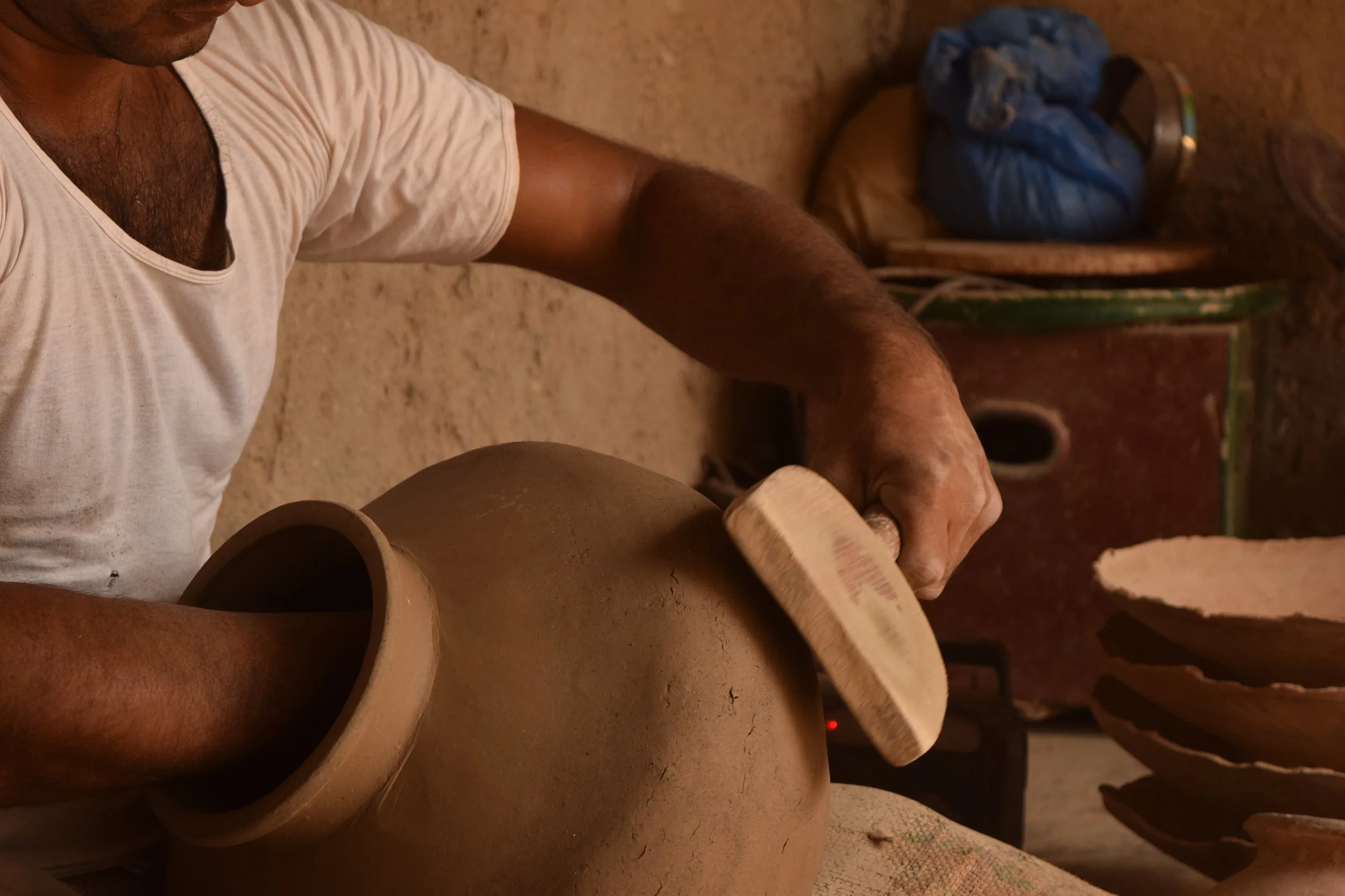
3 - Tapping
Ghadai, or tapping, begins after the completion of the throwing process. Two types of tools are used in tapping. “Kunero” is made of stone and is used to support the inner side of the pot. “Tiplo” is a wooden bat that is used to tap the pot from the outer side. Both these tools play a very important role in the potter’s life. Tools were passed from one generation to the next and help maintain the identity of the Kumbhars. There is a graveyeard in the Khedoi village, where these tools have been carved on potters gravestones.
Ghadai is done in several stages as the clay dries. Initially, the potter begins tapping from the bottom of the pot. Extra clay is removed from the bottom and it is pulled upwards an made even. The process shapes the pot and makes the walls even and thinner.
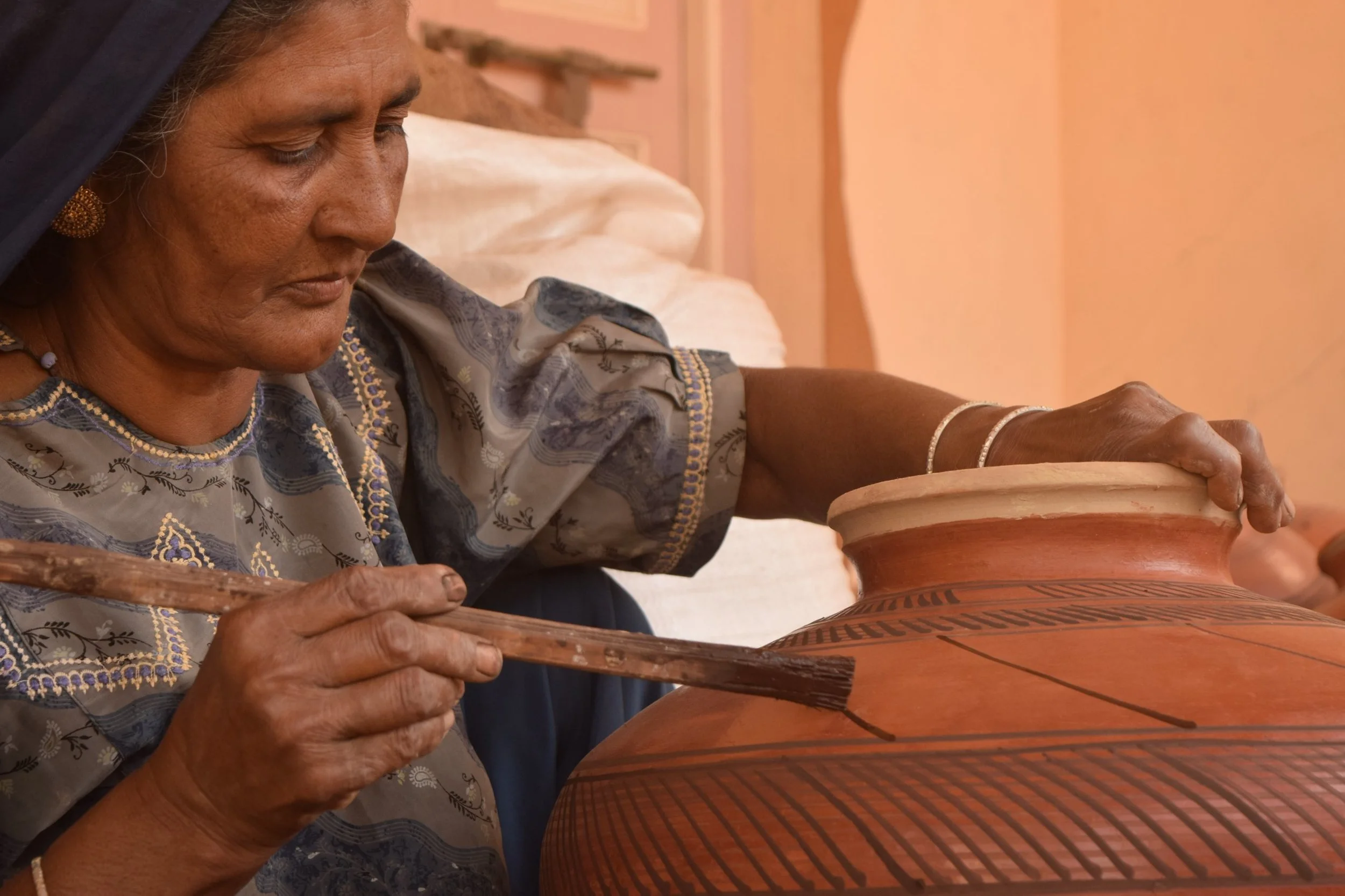
4 - Painting
Once the product is dried, women begin painting the pot. This adds additional value to the product. Women paint according to the community for whom the pot is made, and is usually done in black, white and red. Black is naturally found in stone from the landscapes around Kachchh. White is china clay, and red is made from geru (iron oxide). Bamboo brushes are used for painting.
A woman achieves symmetry in her painting through practice. Women paint many pots of similar designs, but each one has an element of uniqueness to it. The beautiful bold lines and motifs are one of the characteristics of Kachchhi pottery.
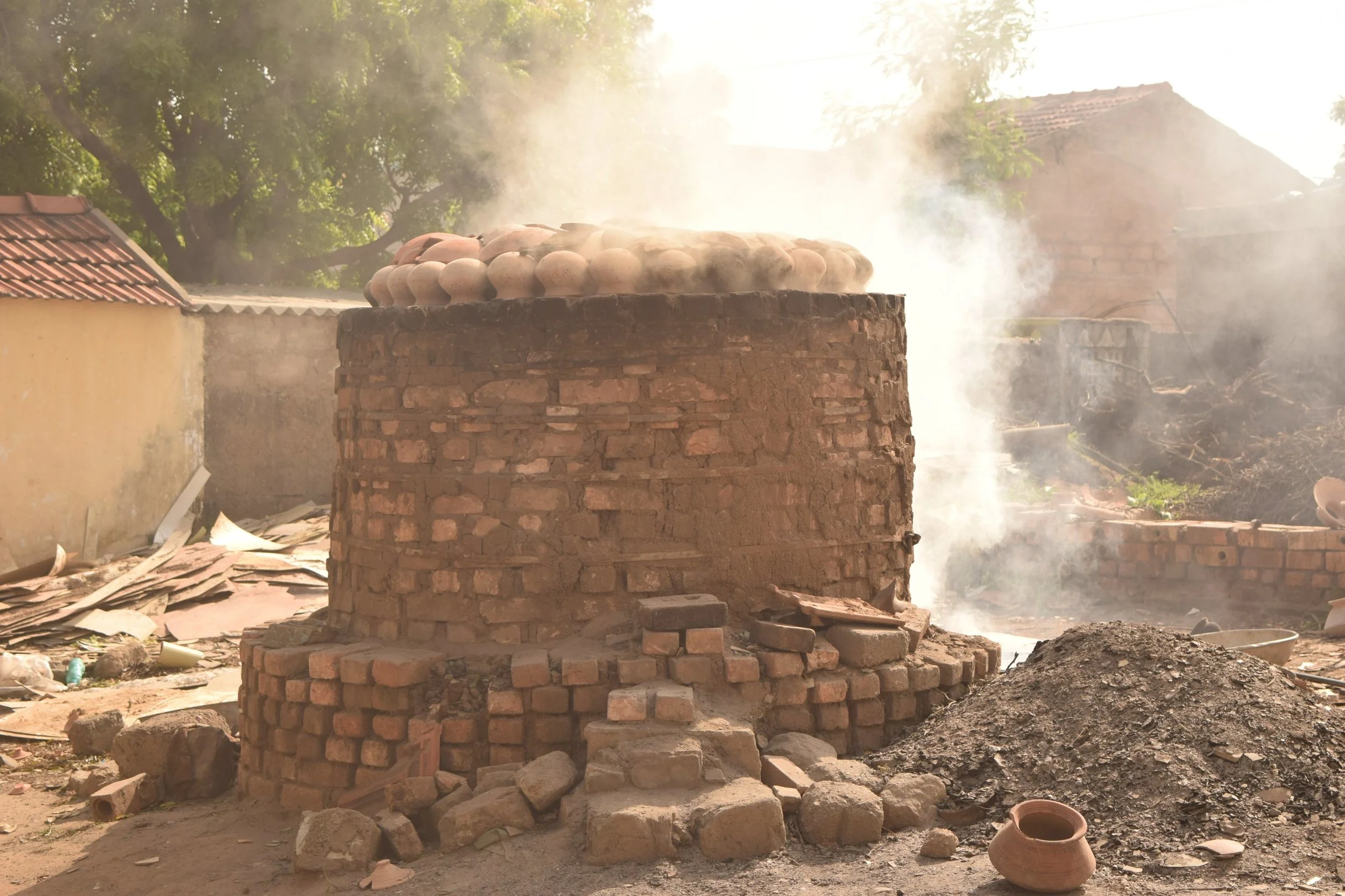
5 - Firing
The firing process includes loading, firing, and unloading. If there is a defect at any one stage, a potter can suffer losses to his products. Generally, the potters of Kachchh practice pit firing and updraft firing. There is always suspense - will there be cracks? Will the color be an issue? Nearly 10-20% of any damage to pottery comes during this stage, and mistakes made during other processes show up during firing as well. It is the ultimate test!
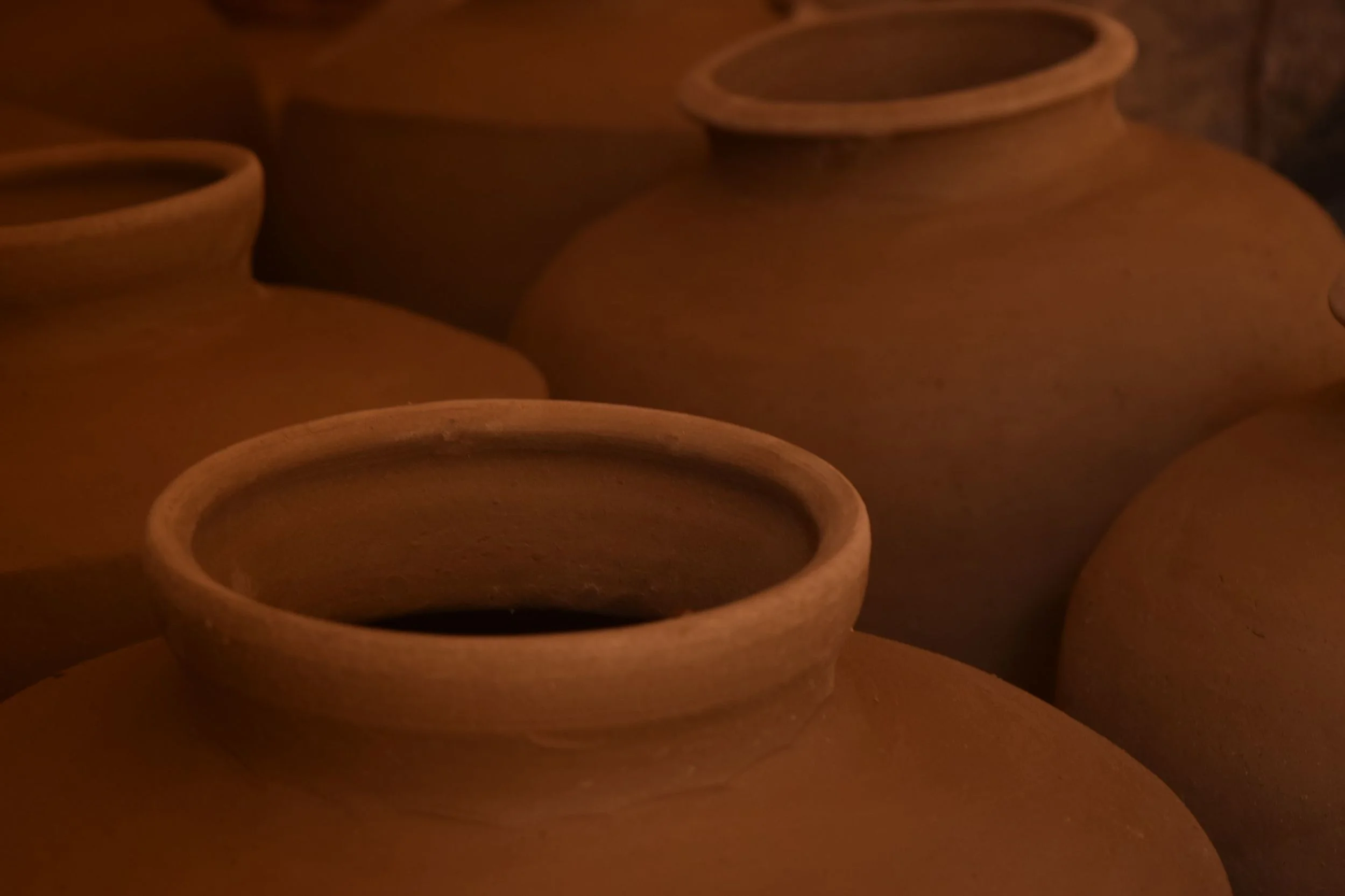
6 - The Unknown sense
Pottery requires a lot of patience and focus. At all stages, the potter needs to take a certain amount of risk, and that risk can only be taken if one has a keen “unknown sense.” With patience, focus, and openness, potters gain this sort of sixth sense for their work. Ramzubhai, potter from Bhuj, says, “I still remember the behavior of a ‘tavdo’ (pot to cook rice), while doing ghadai.”
